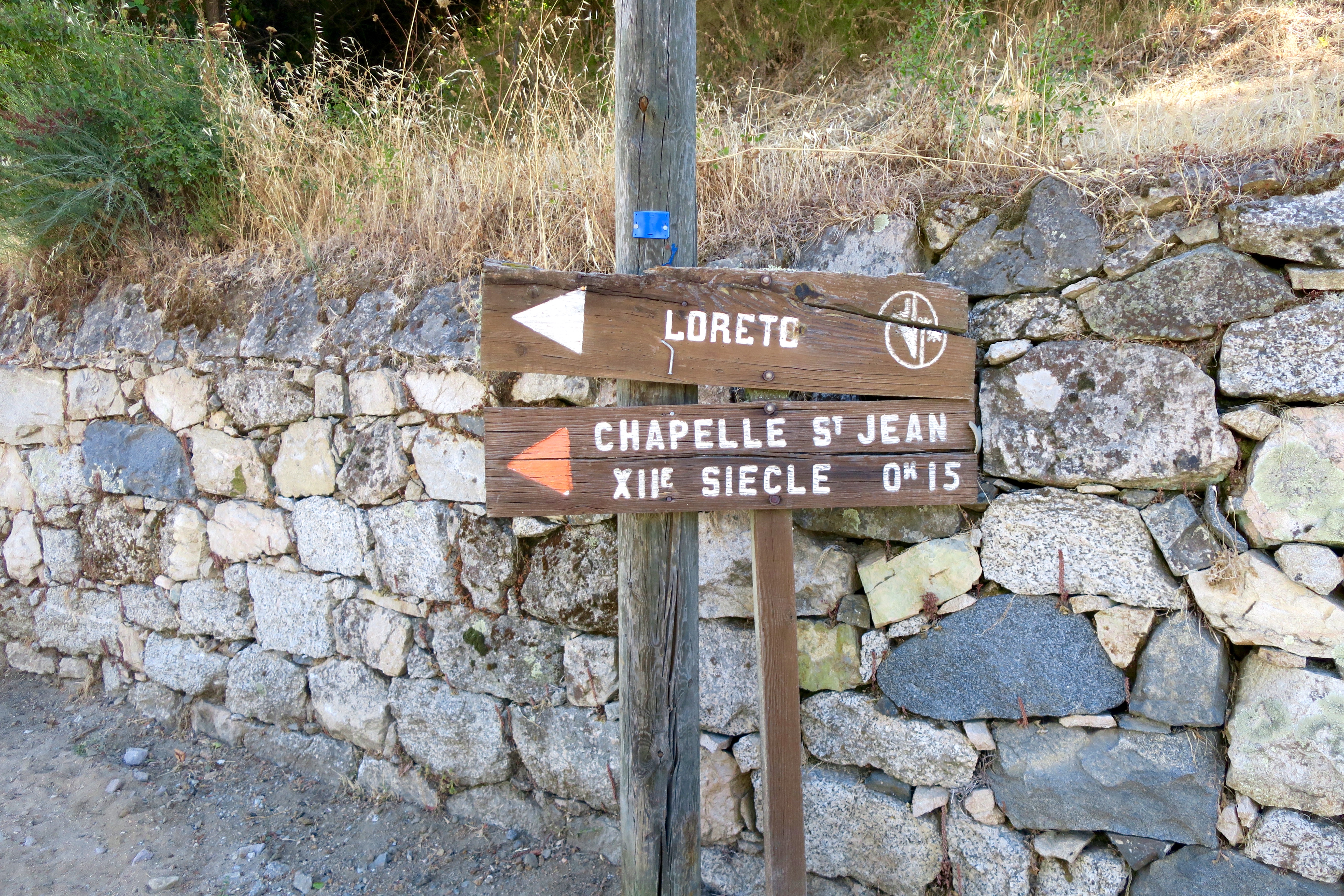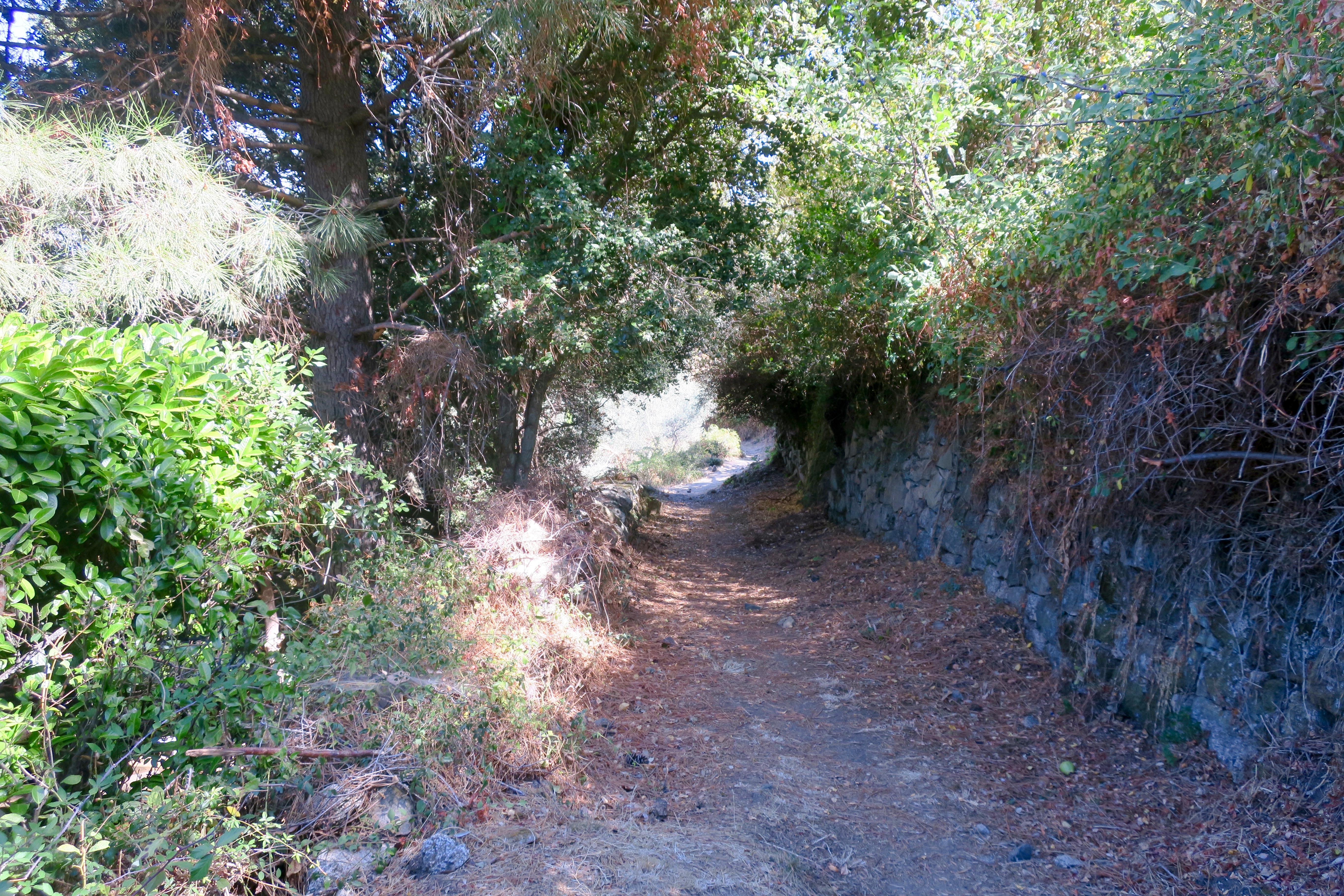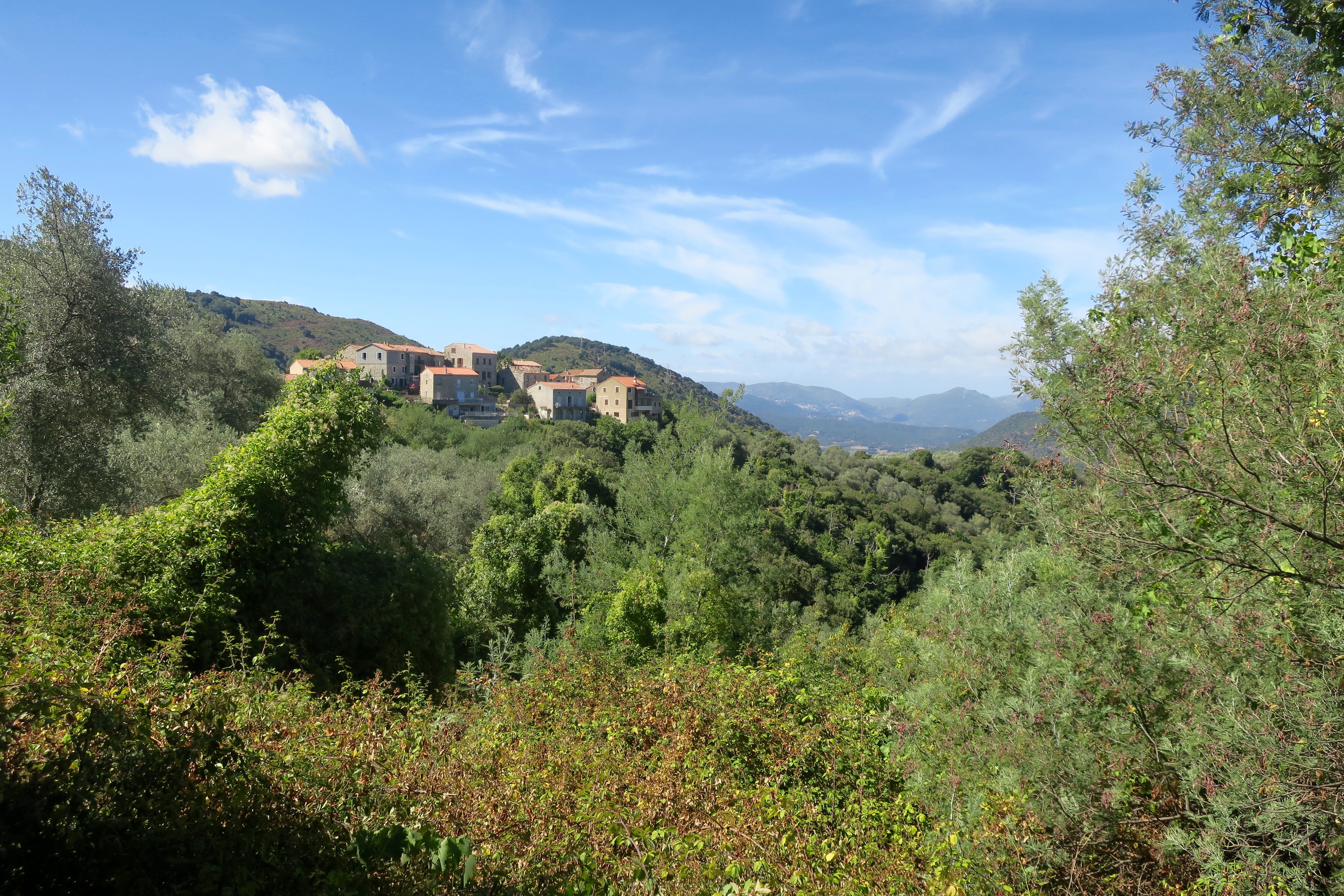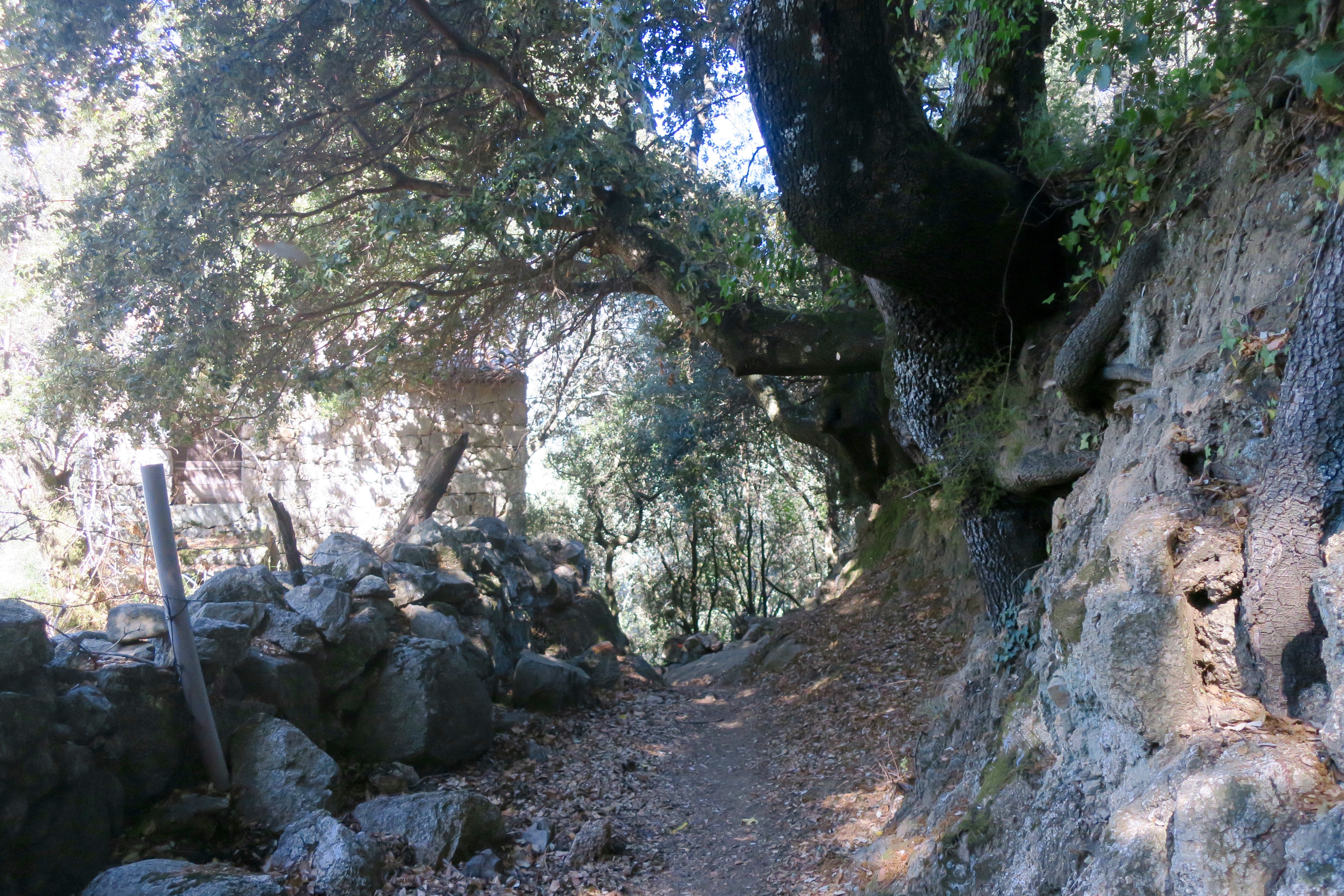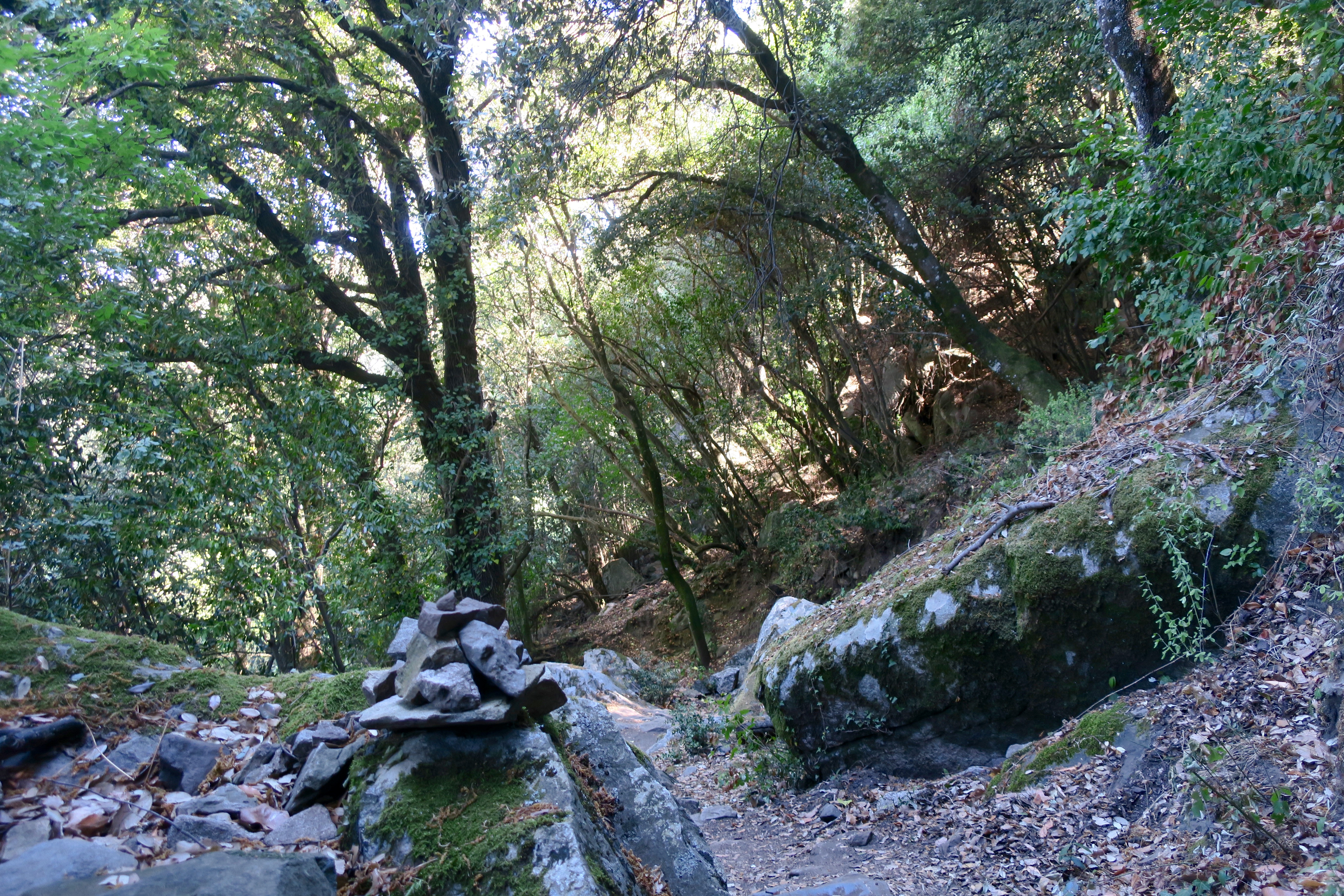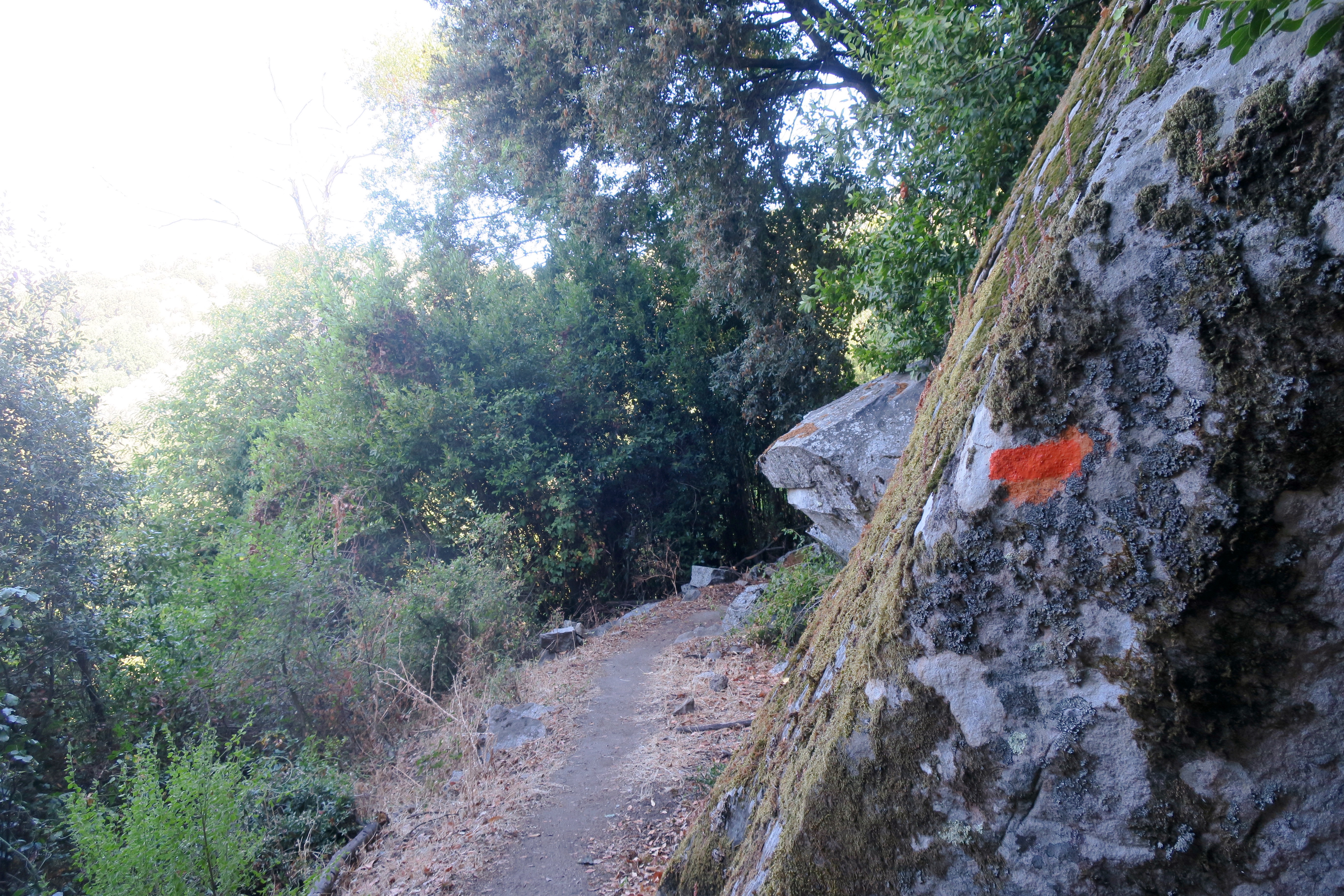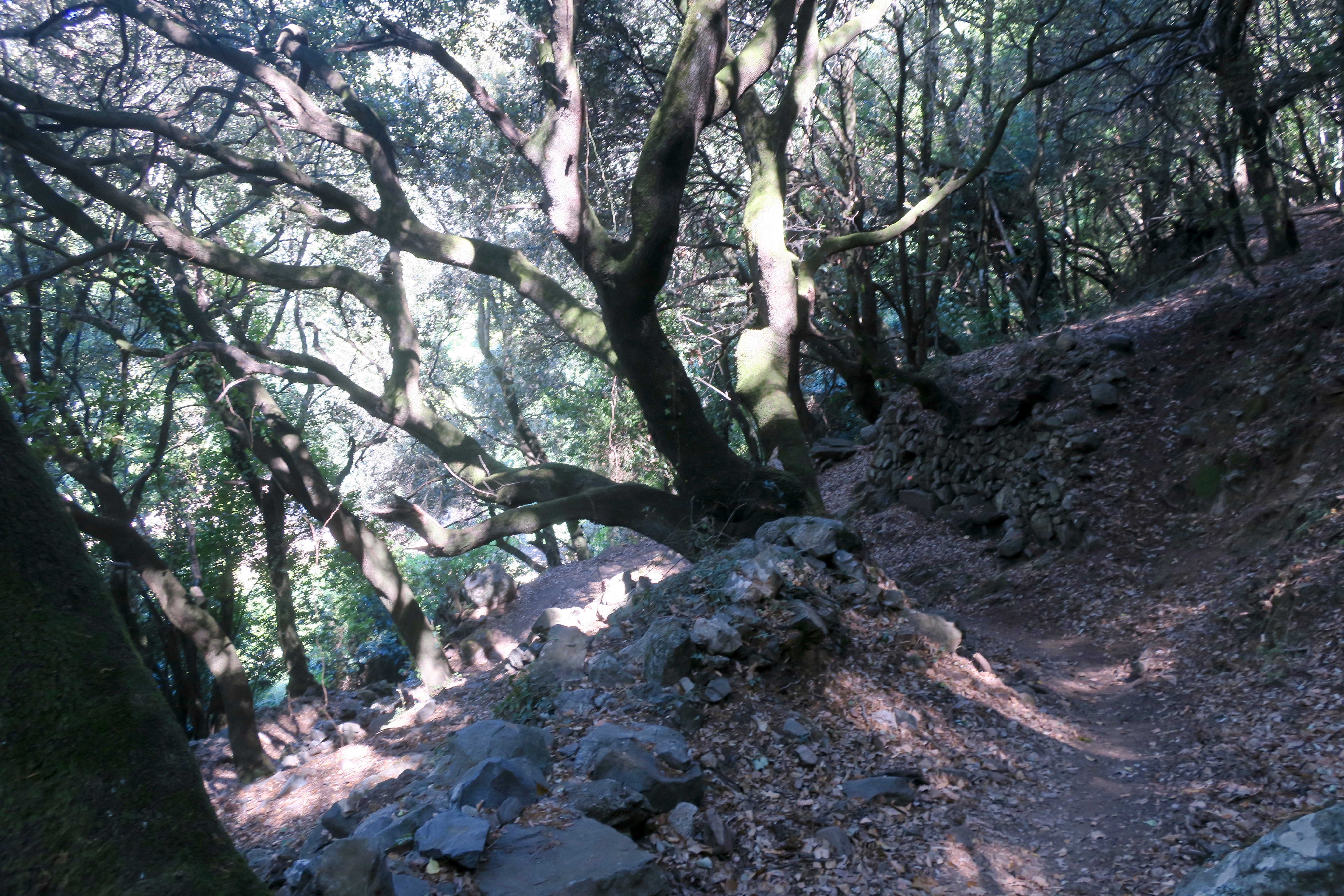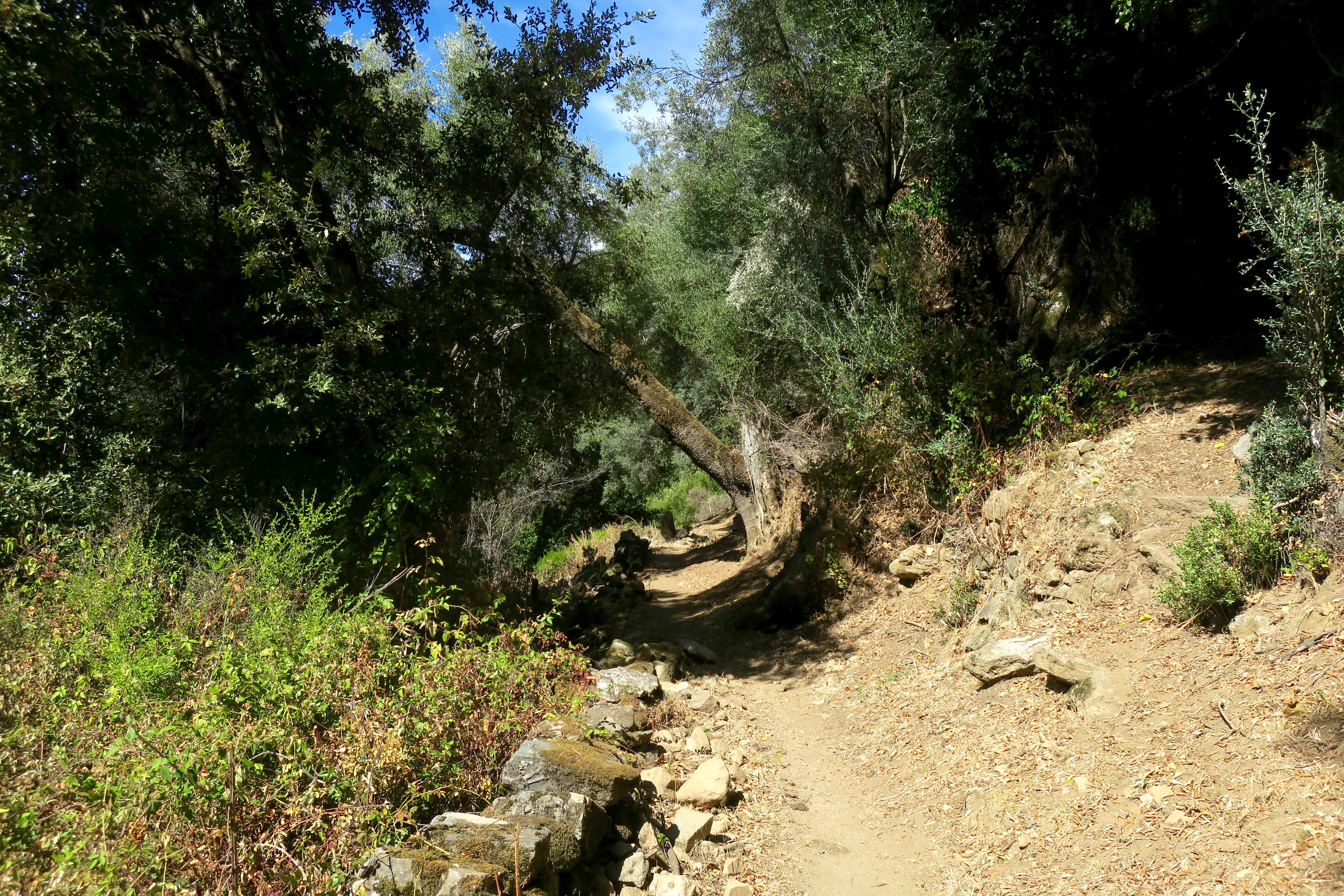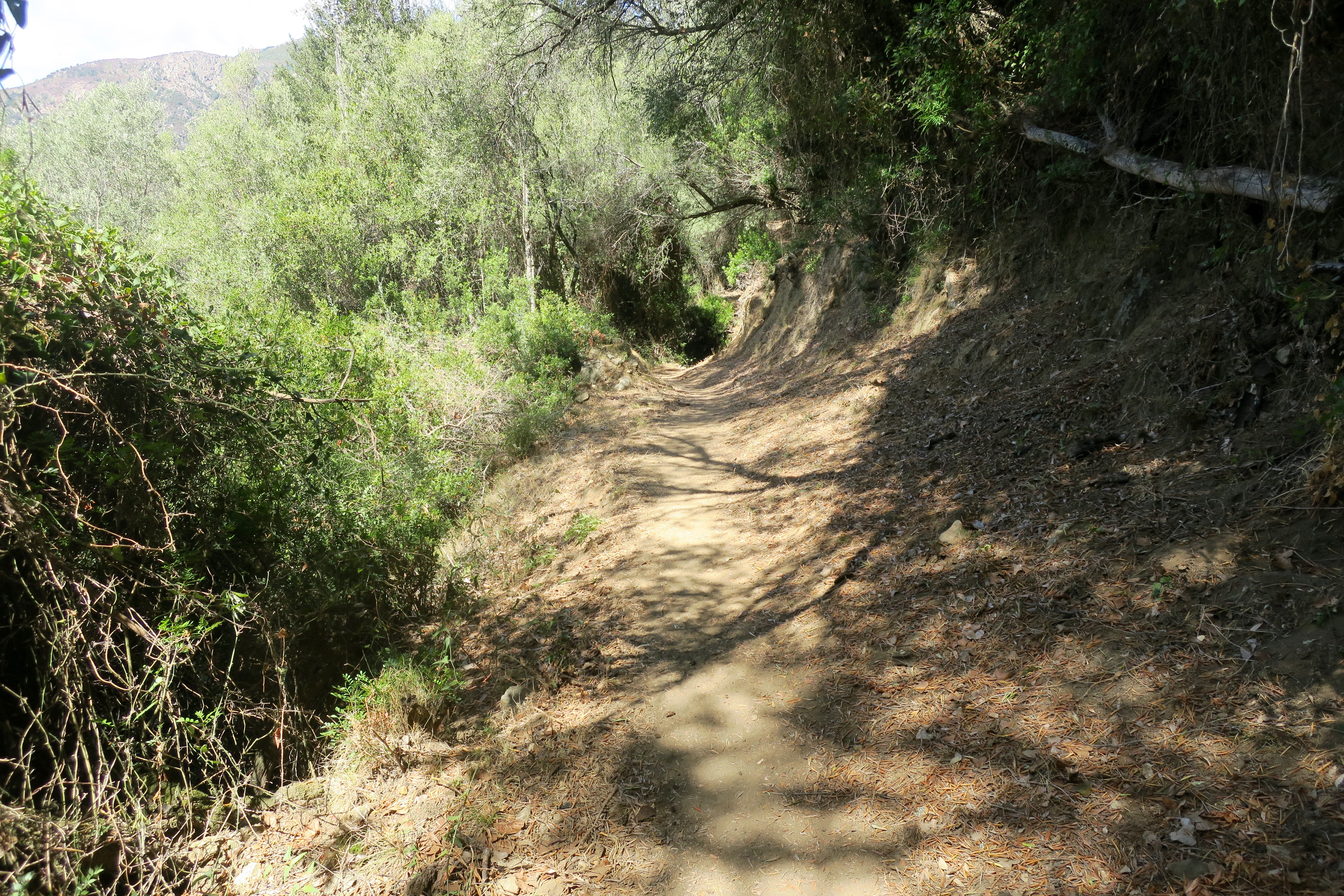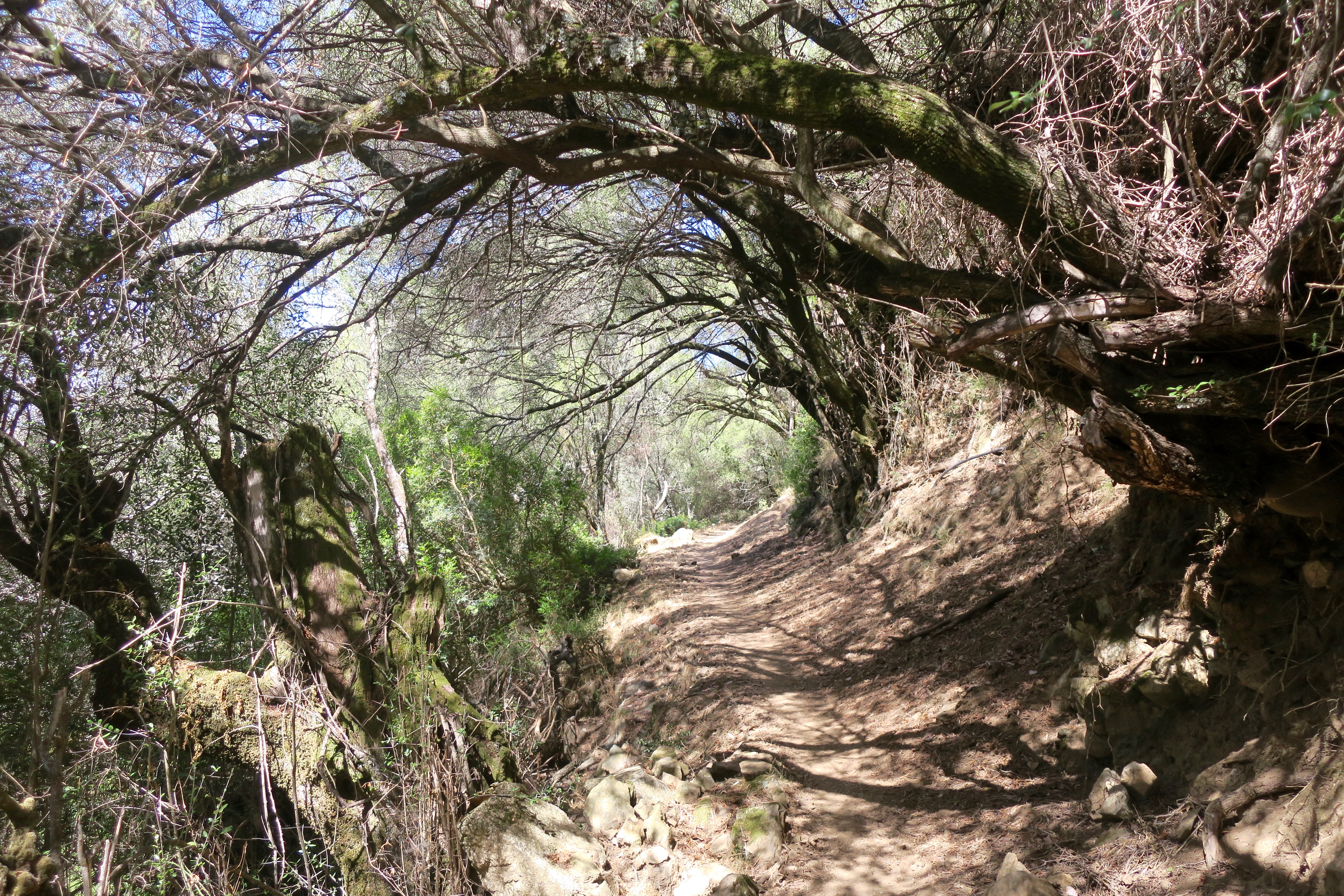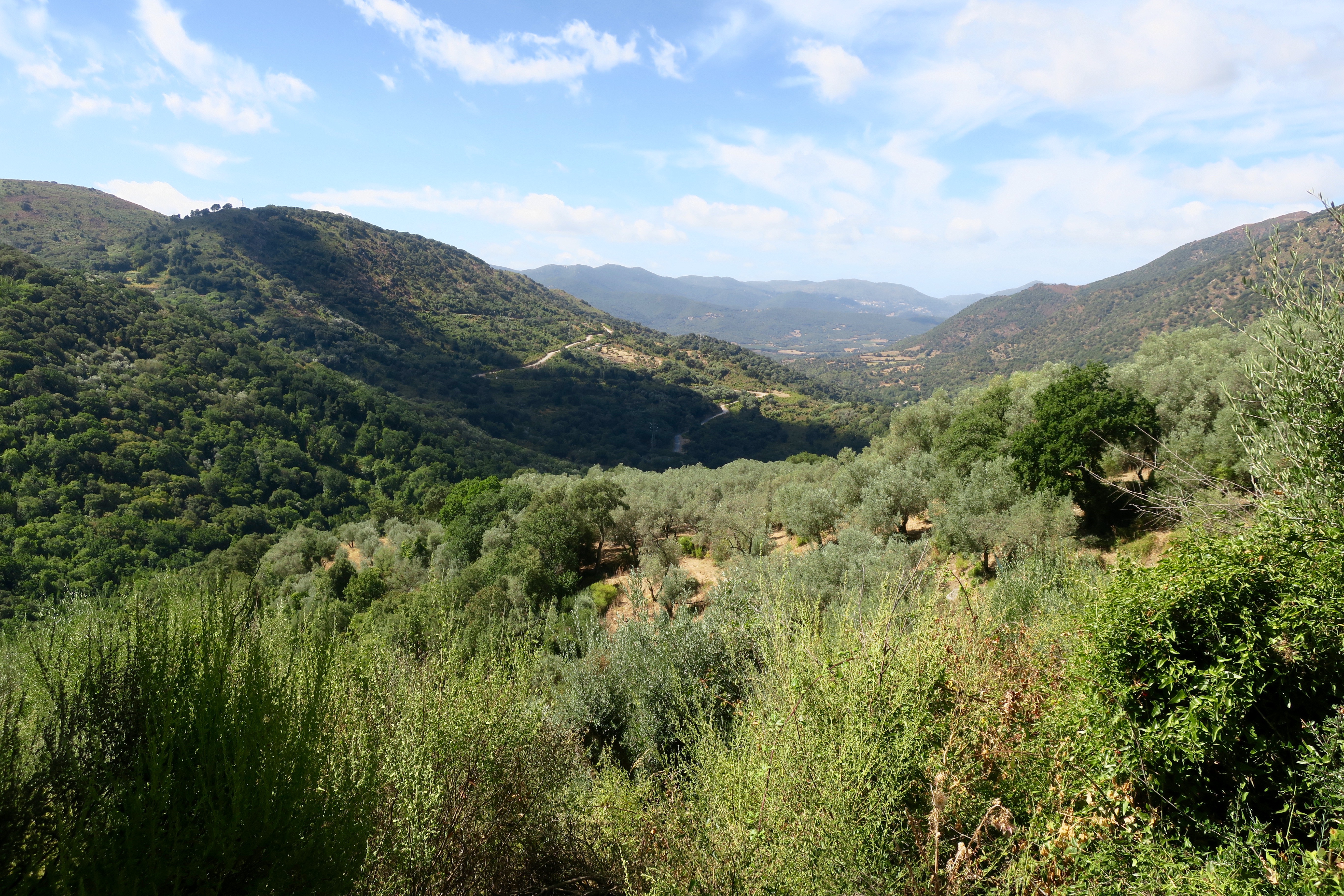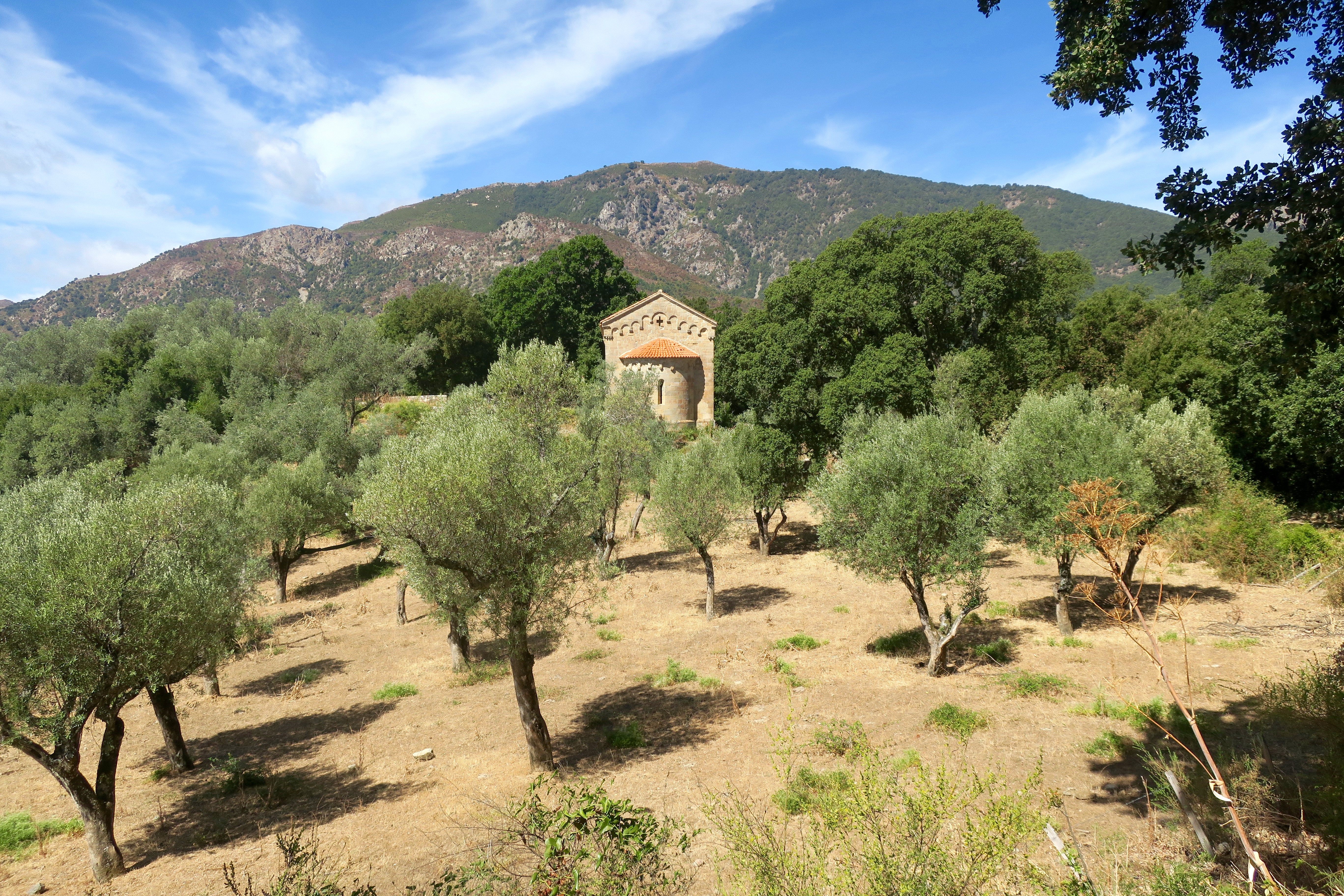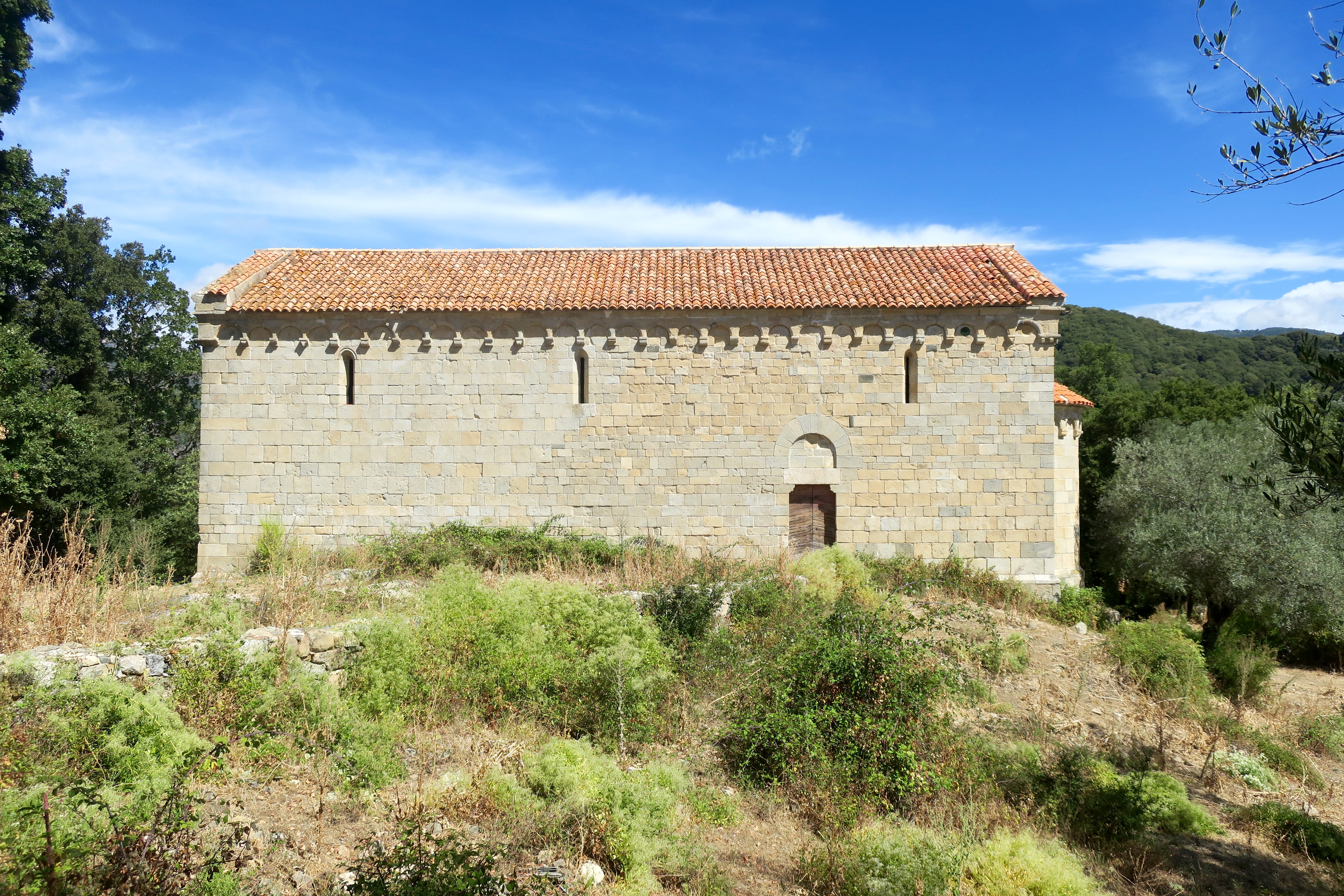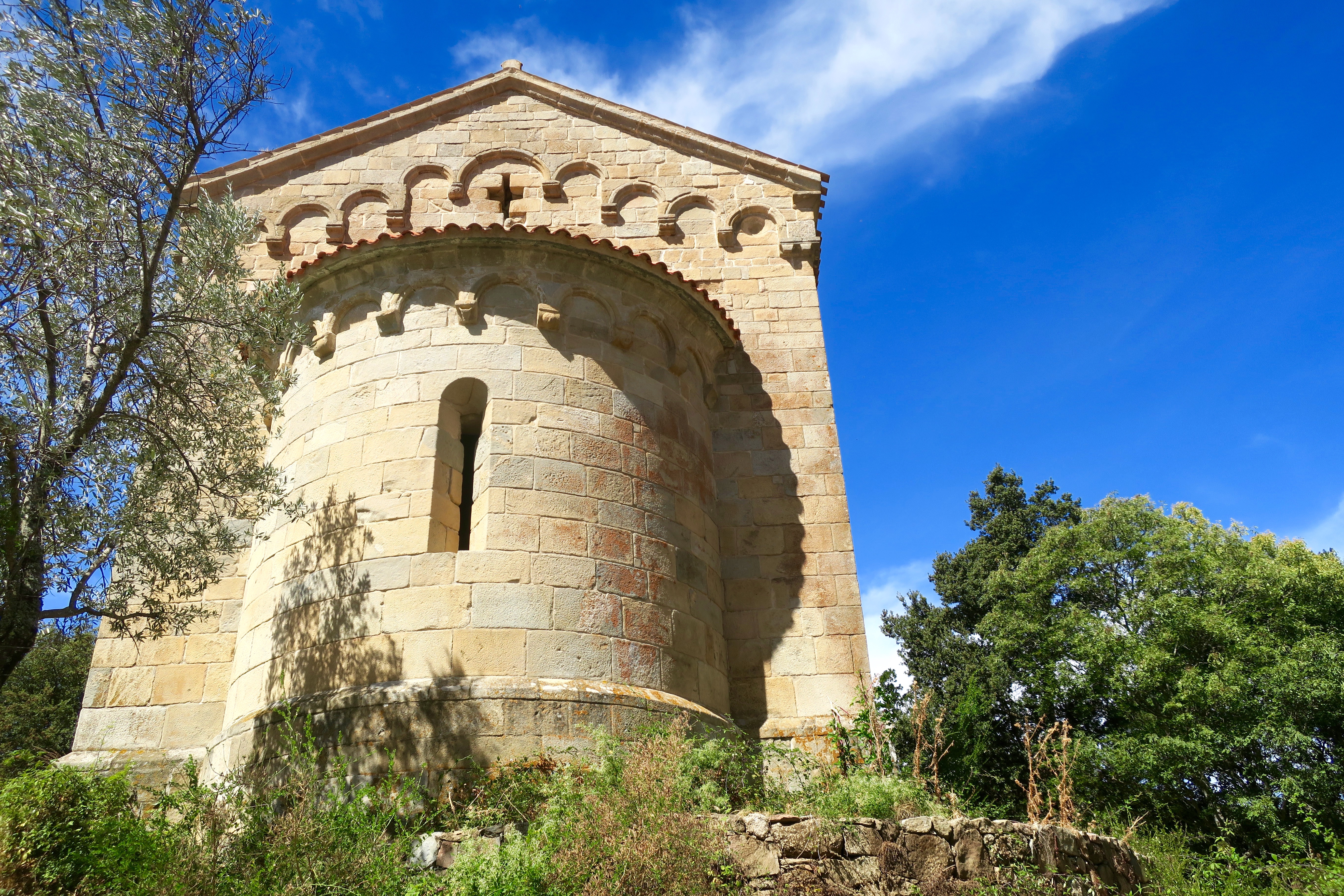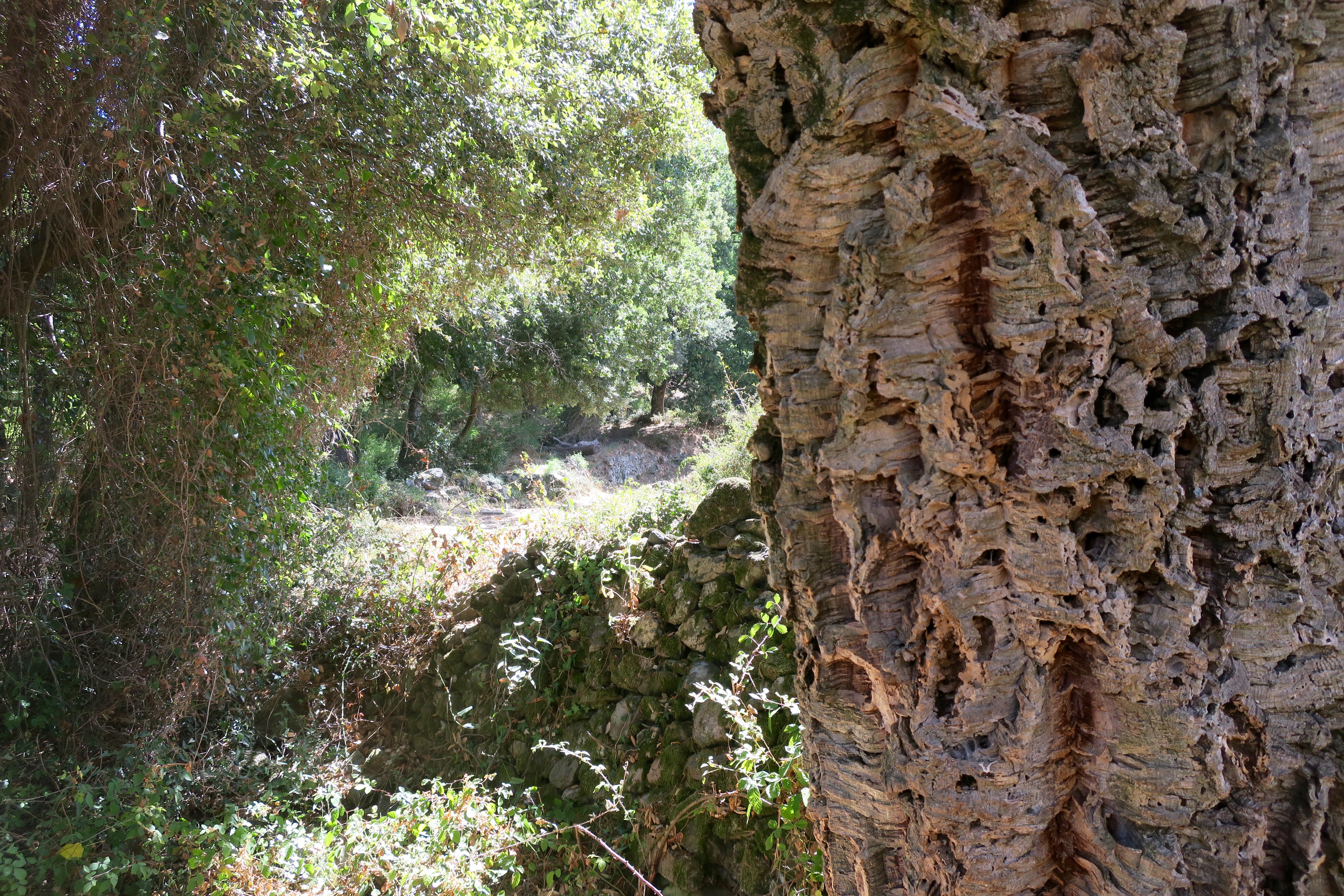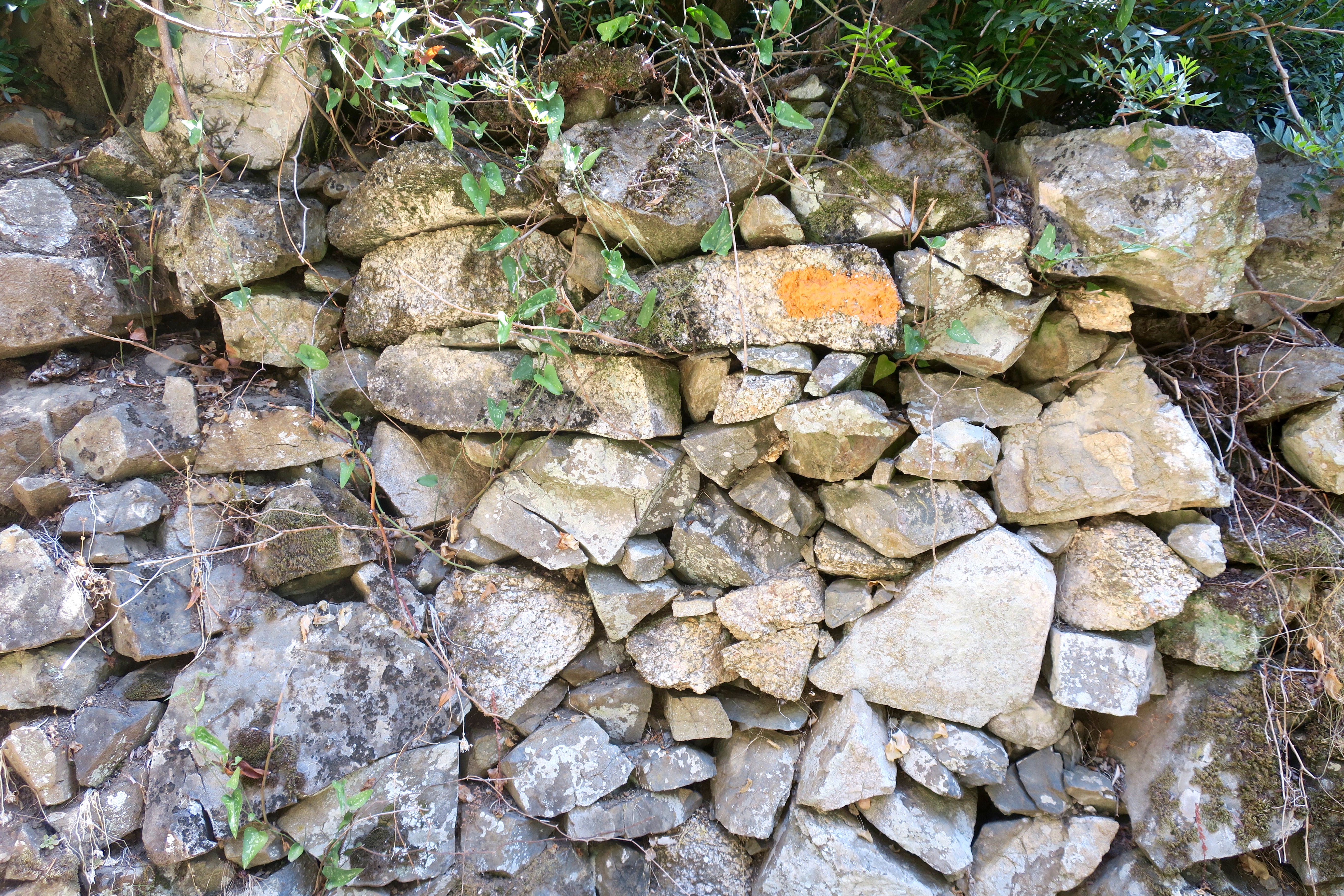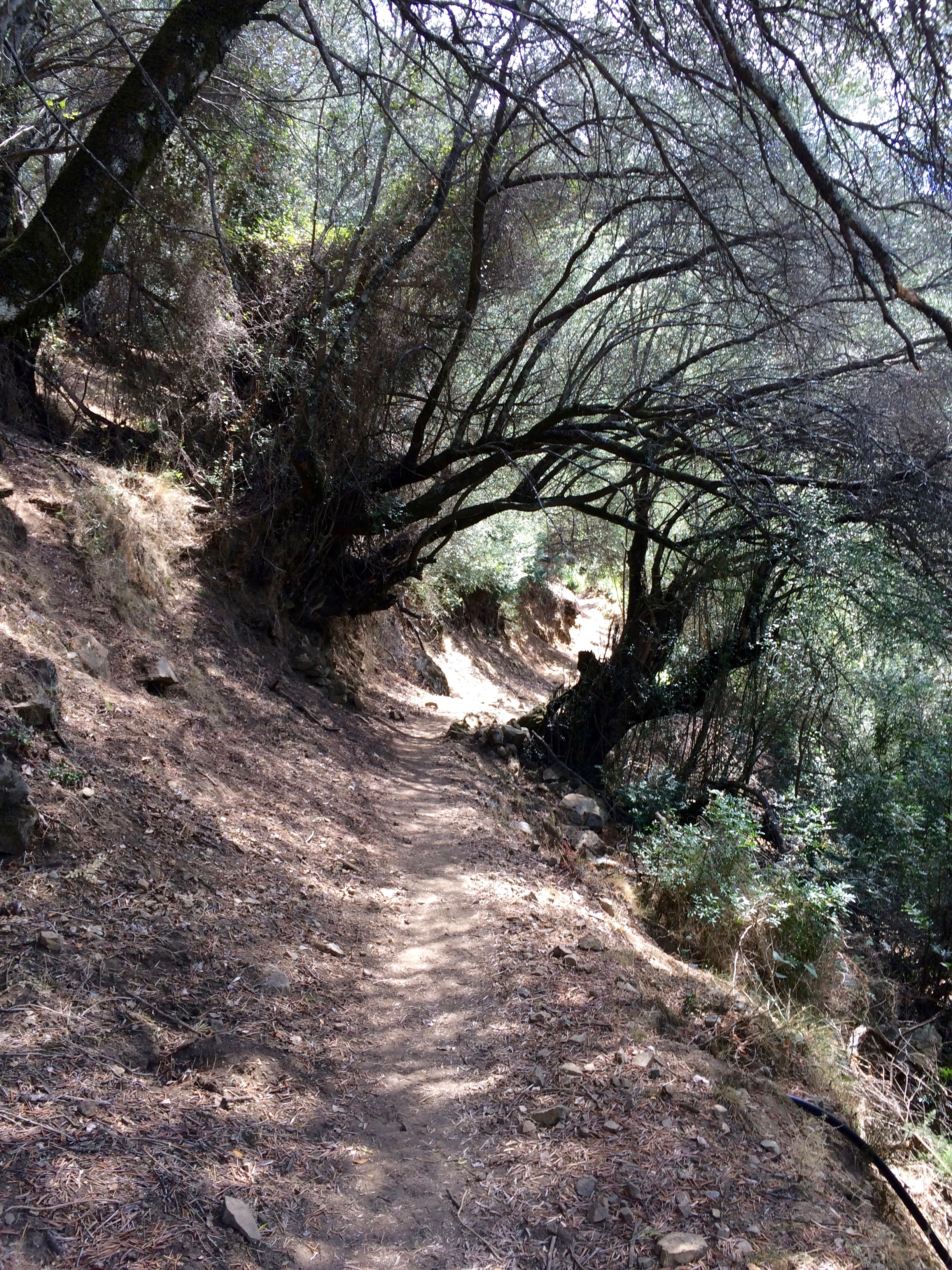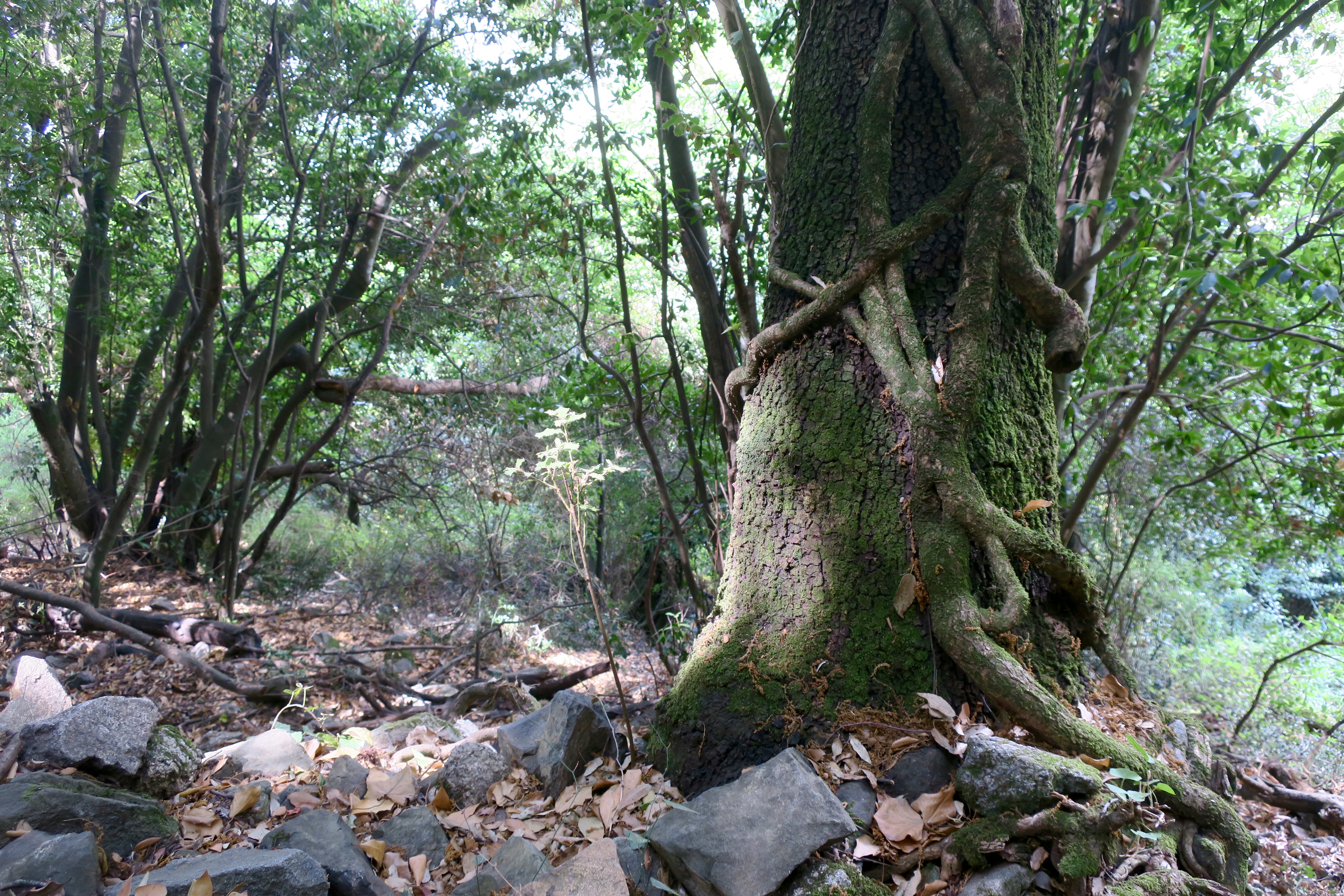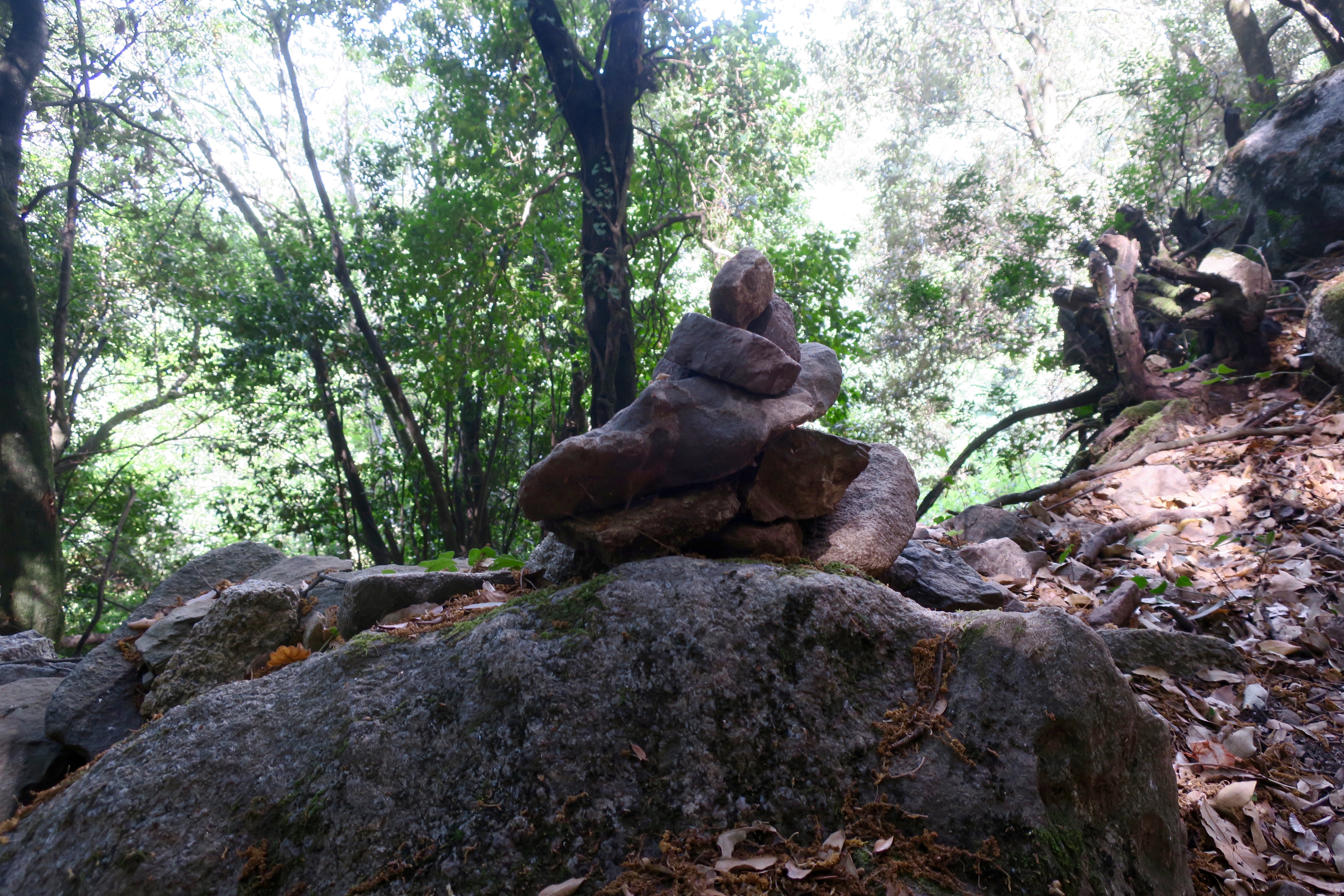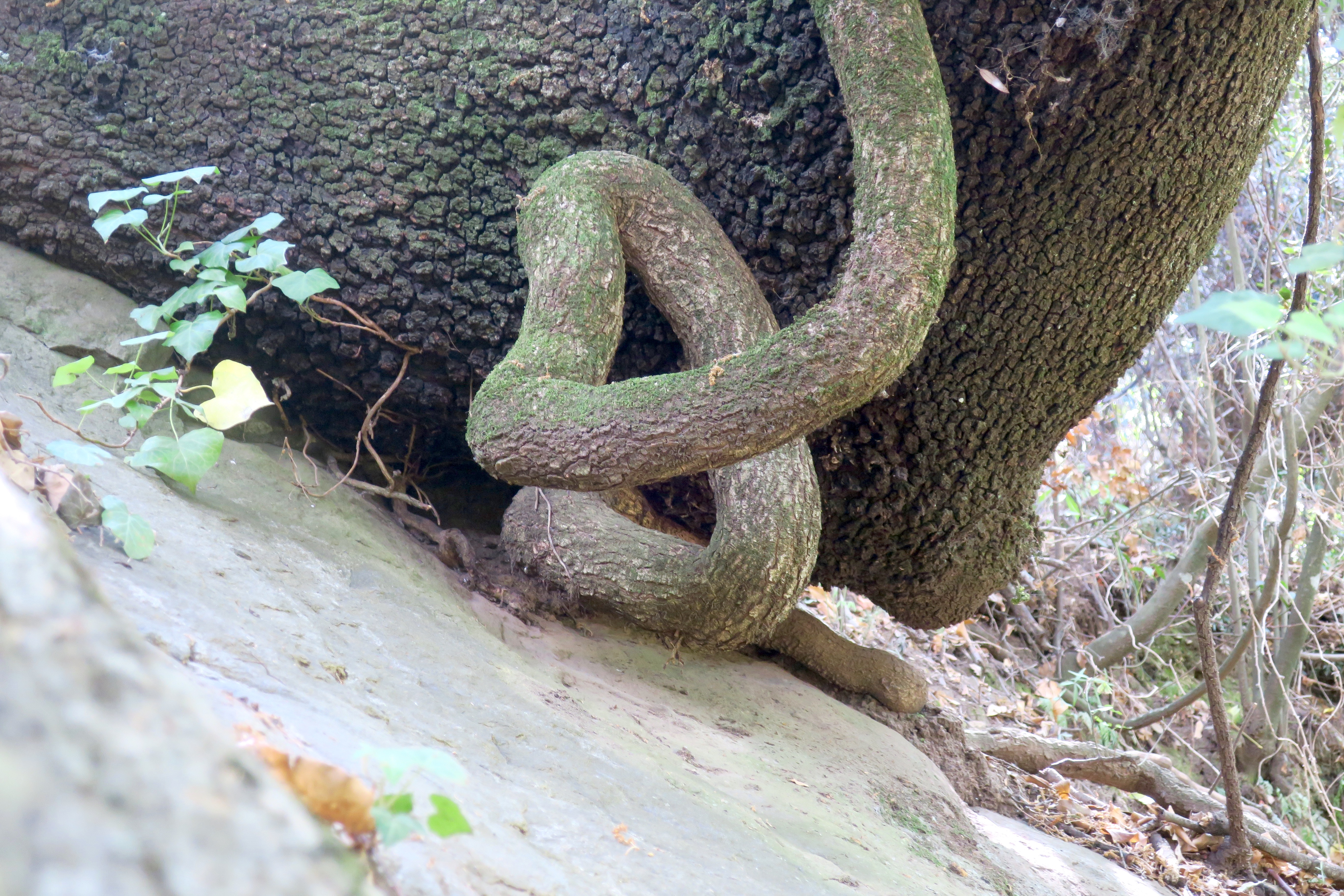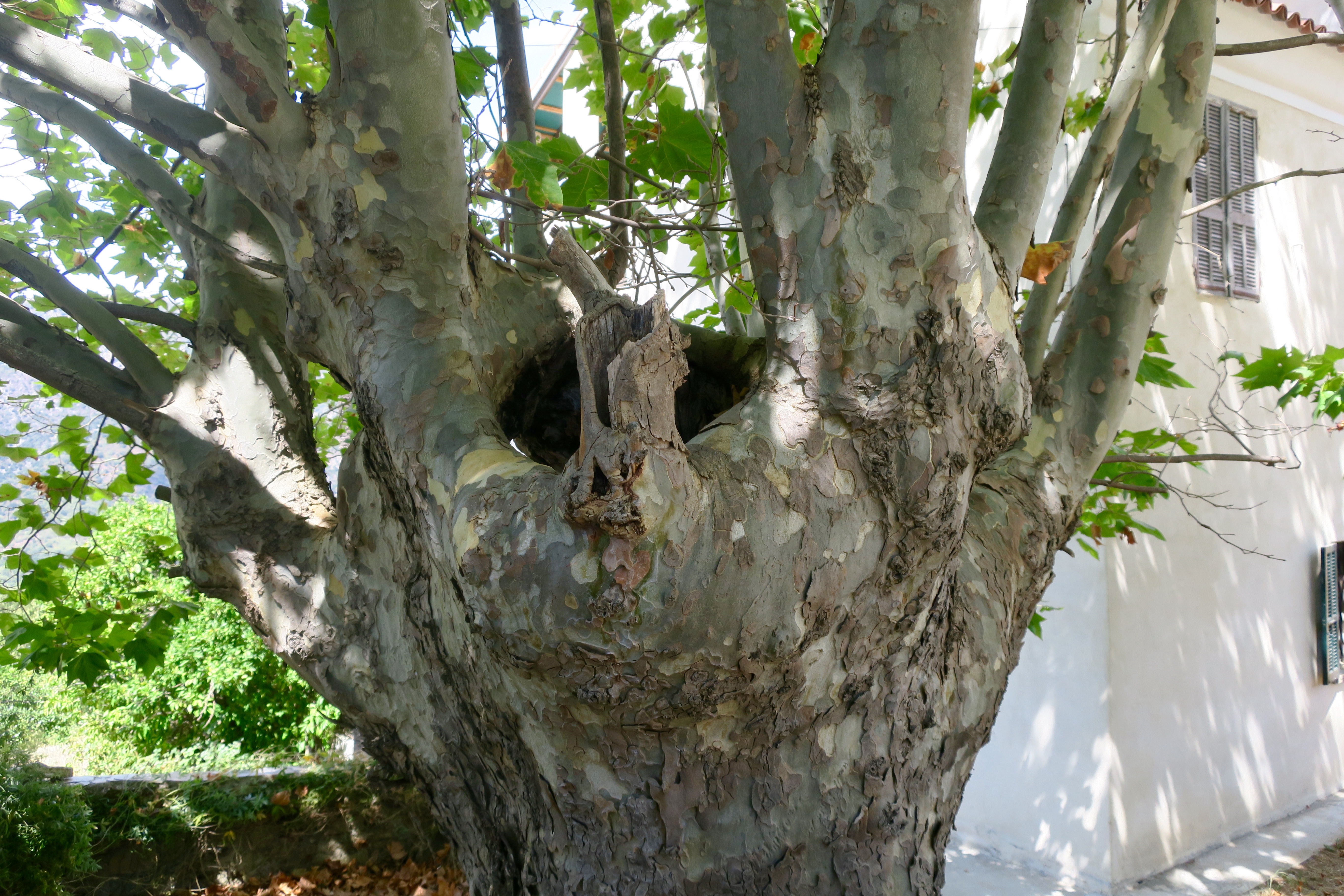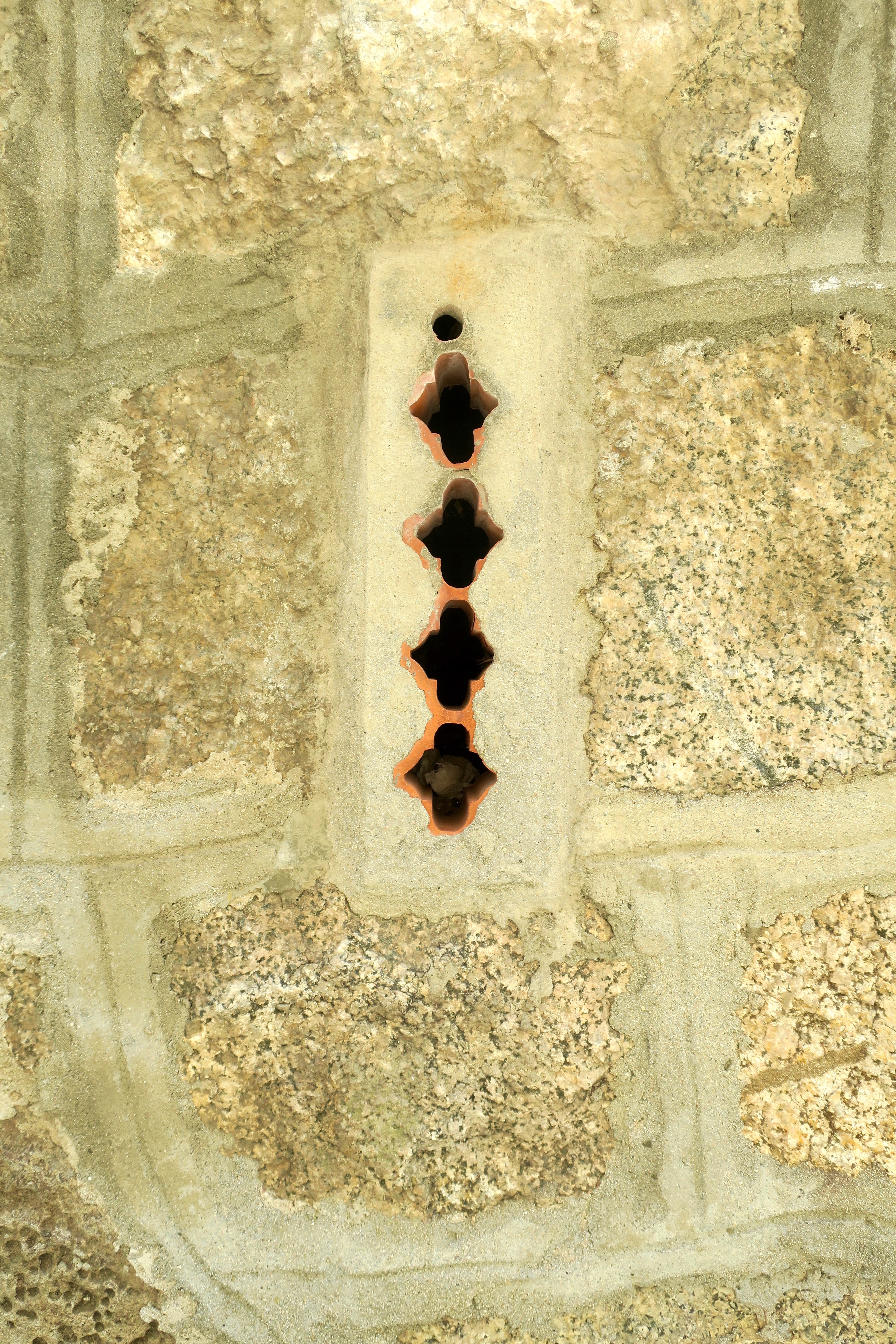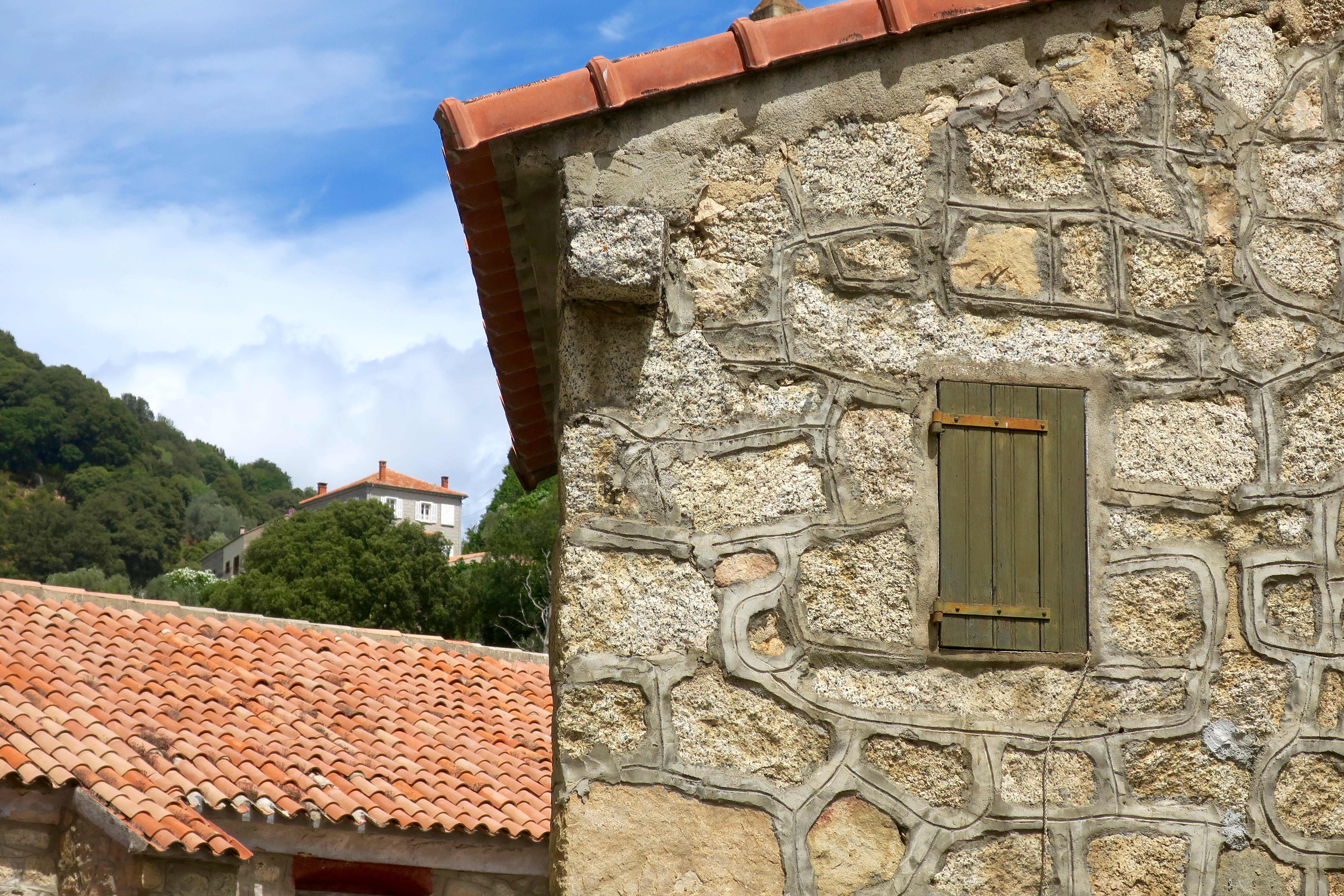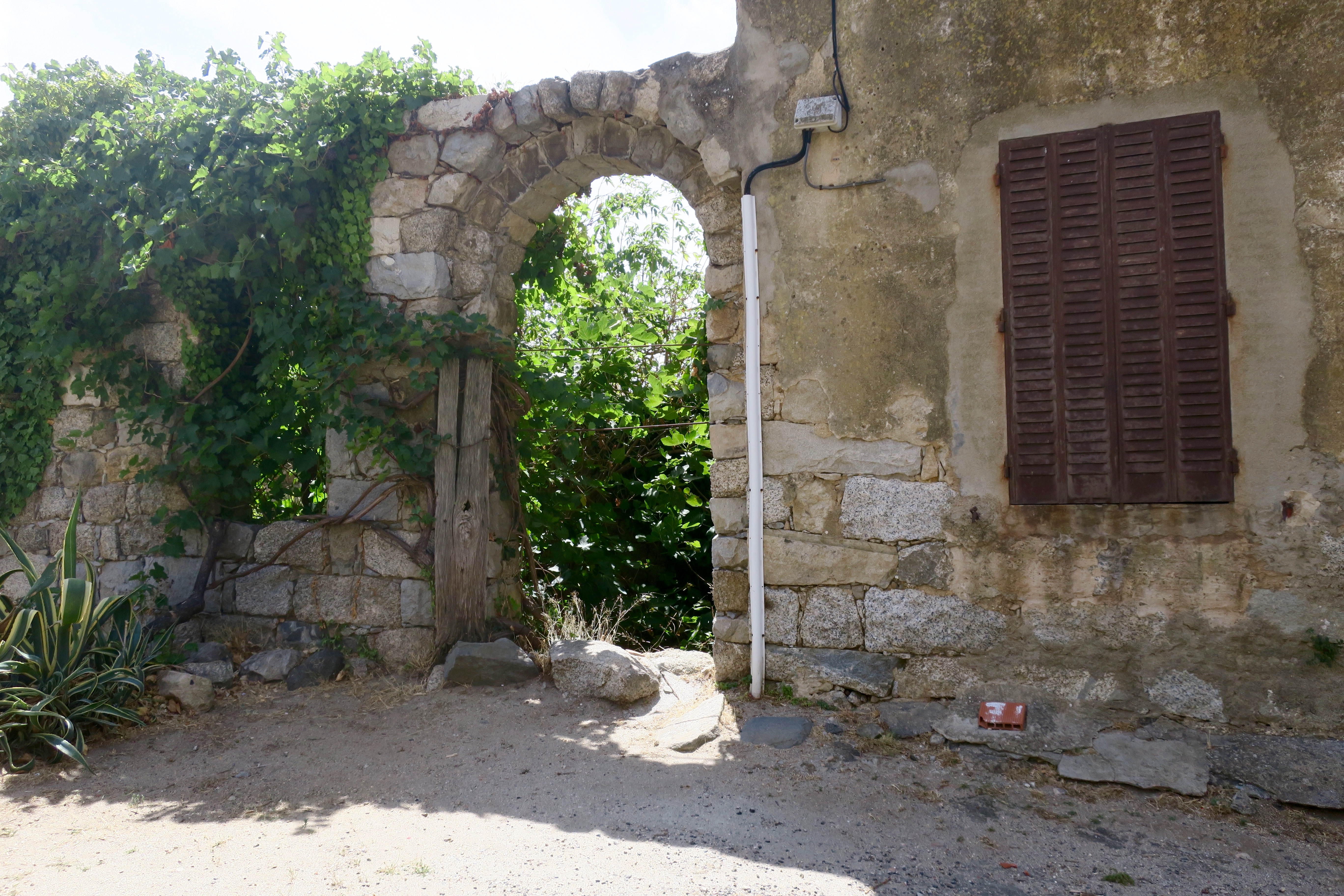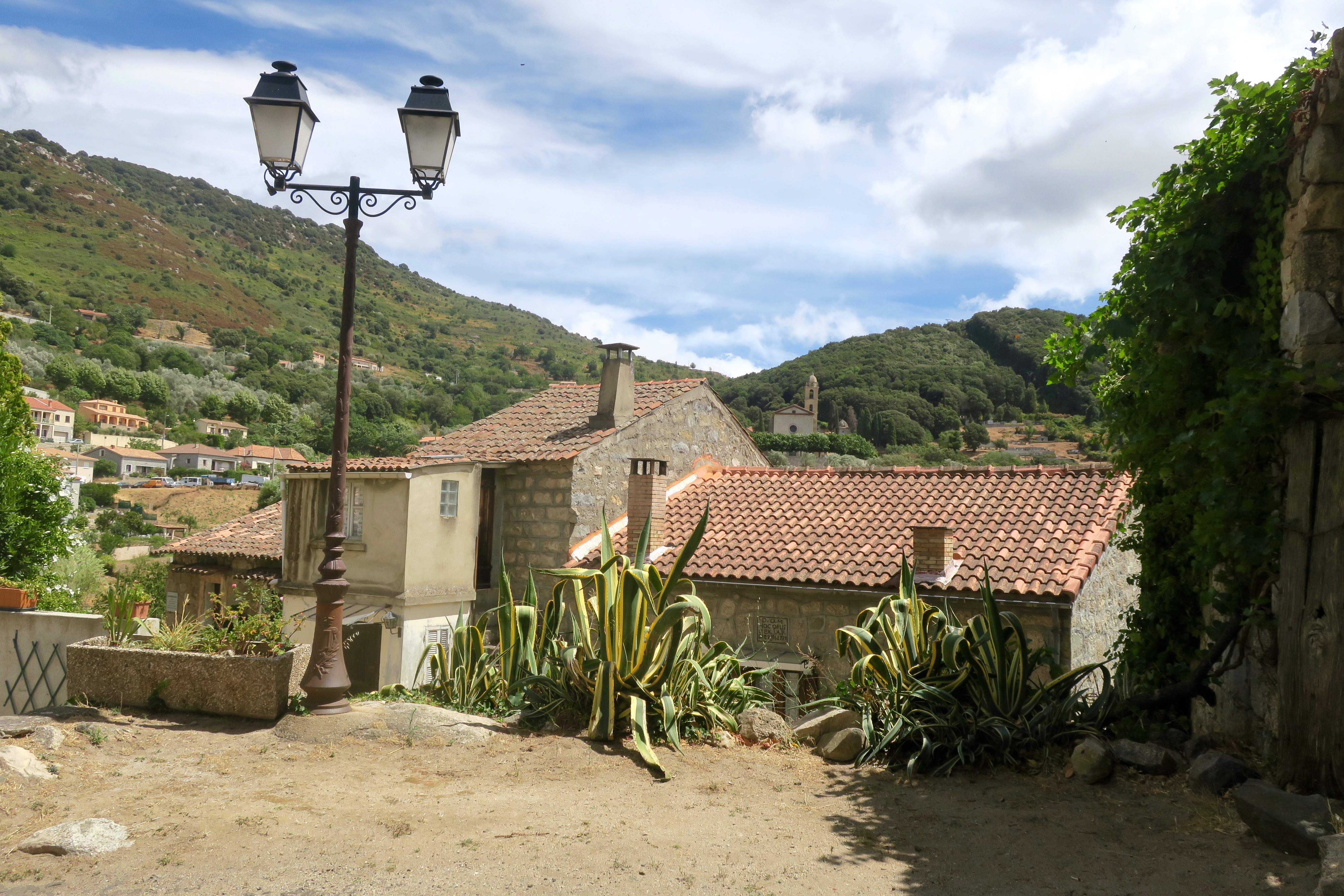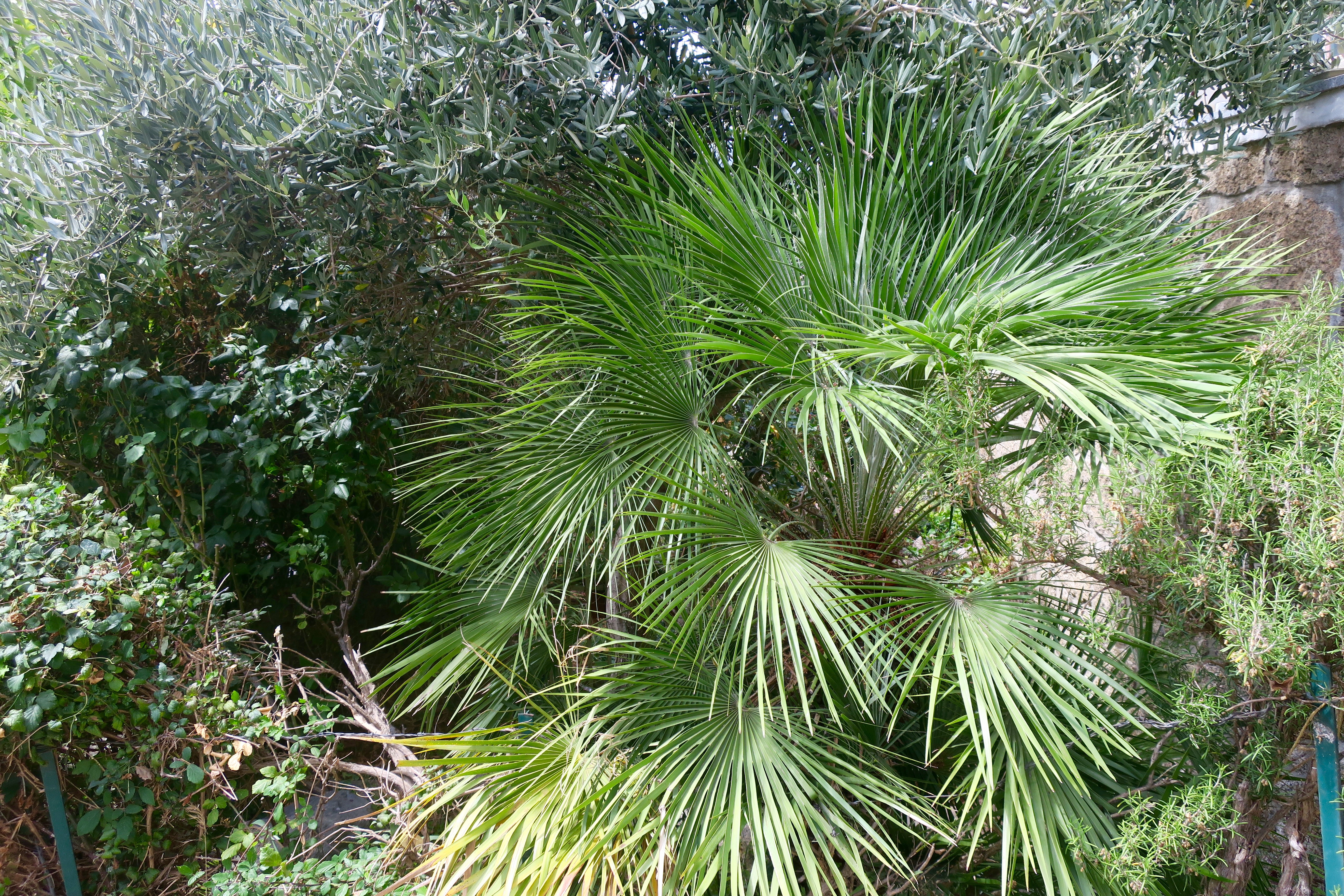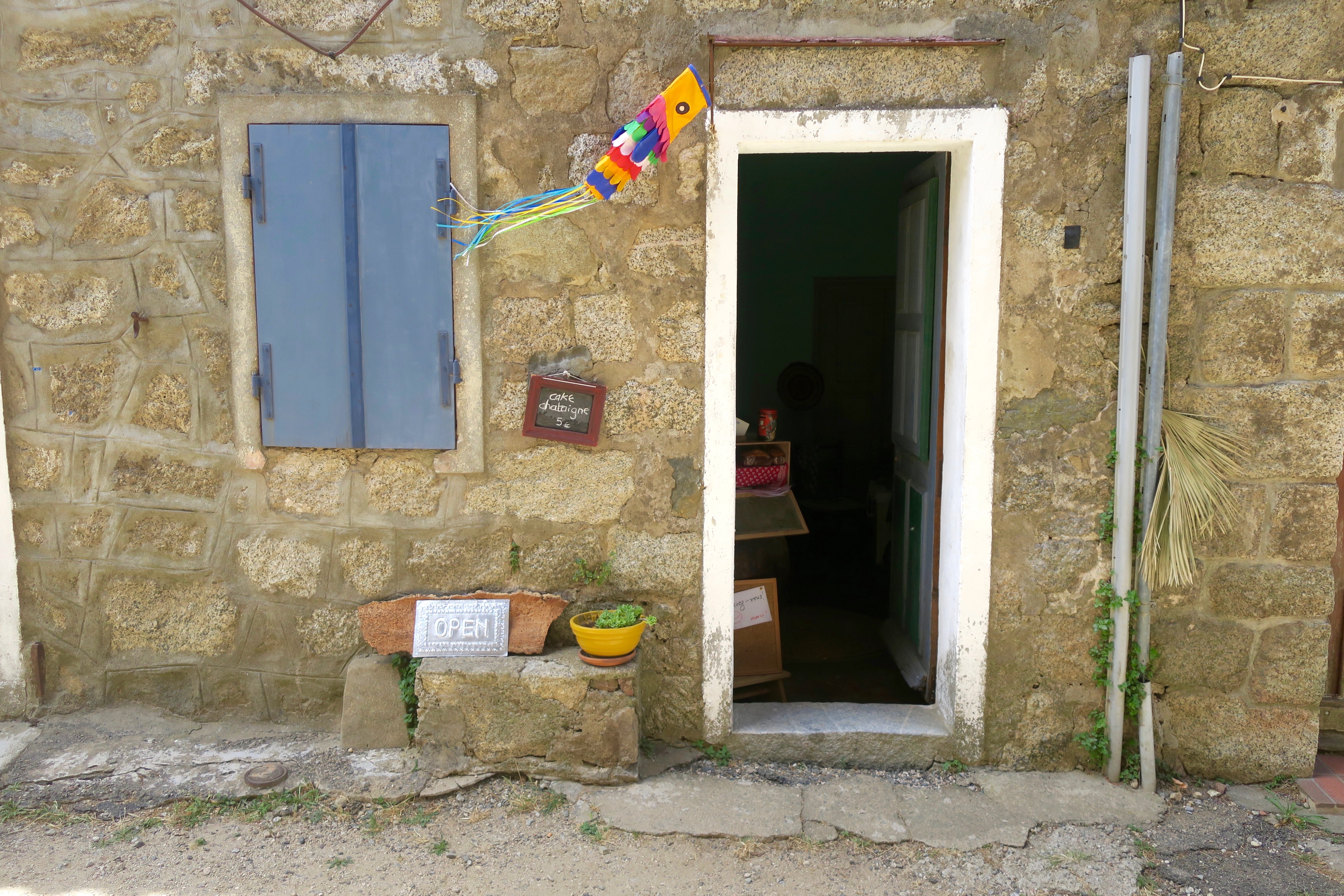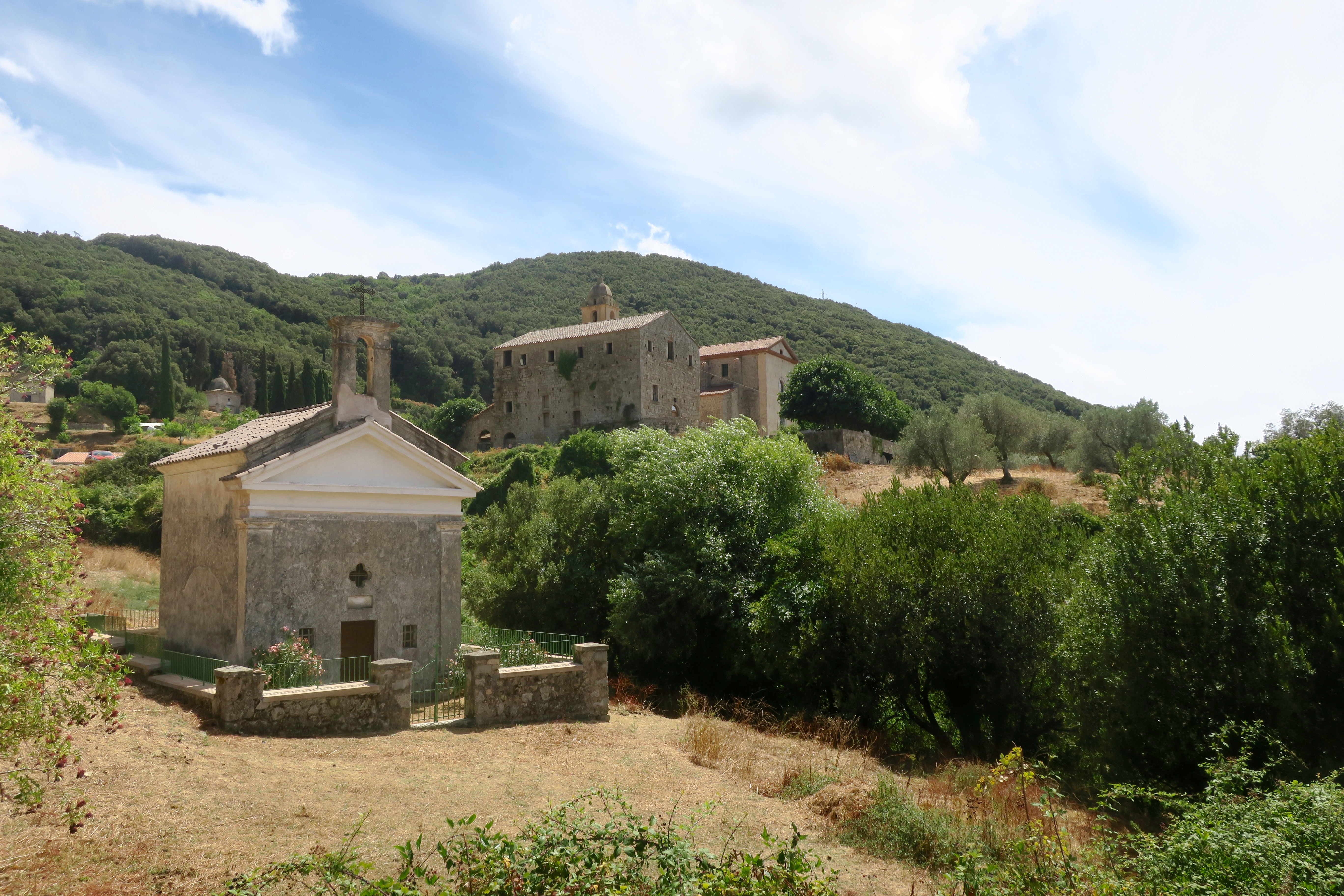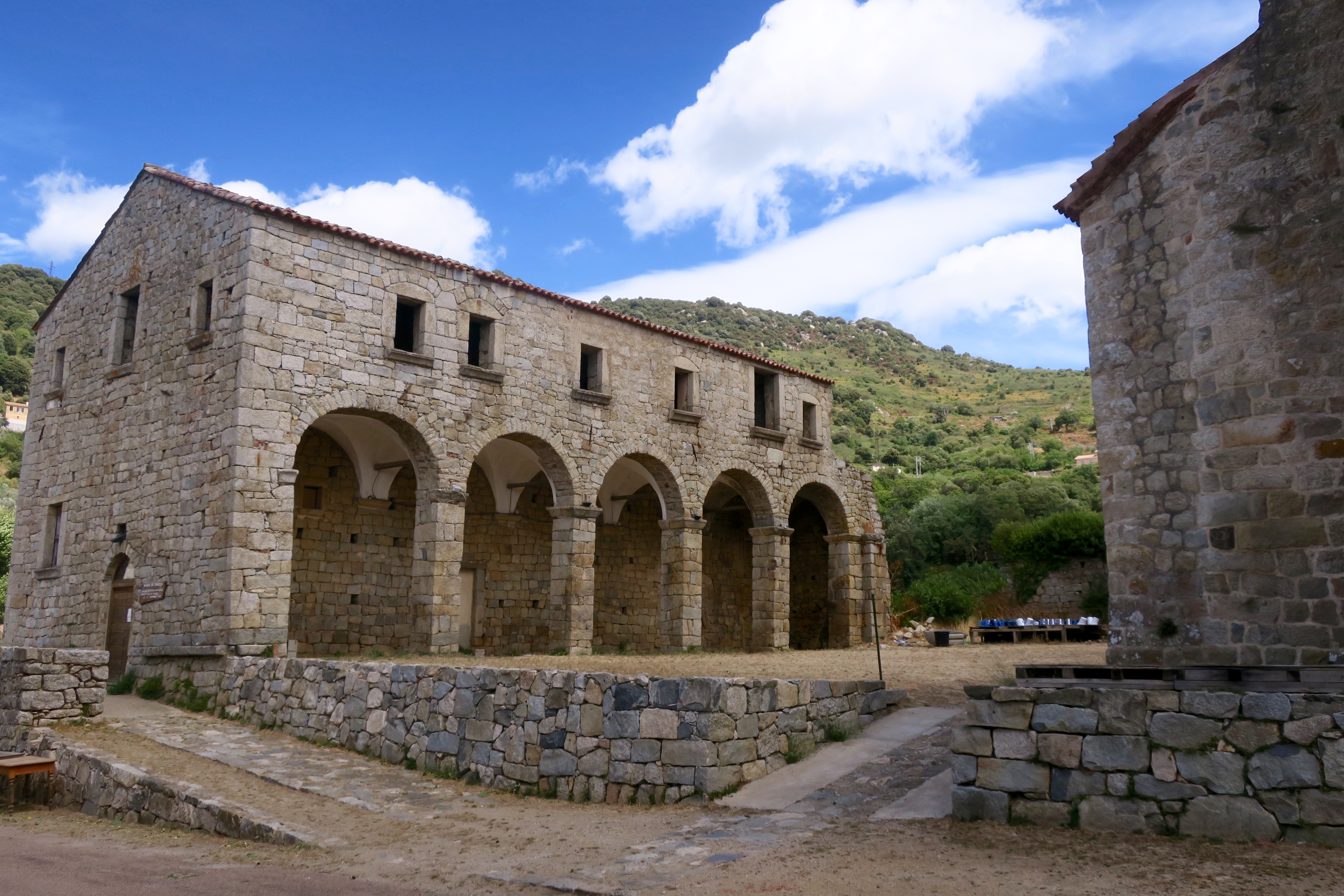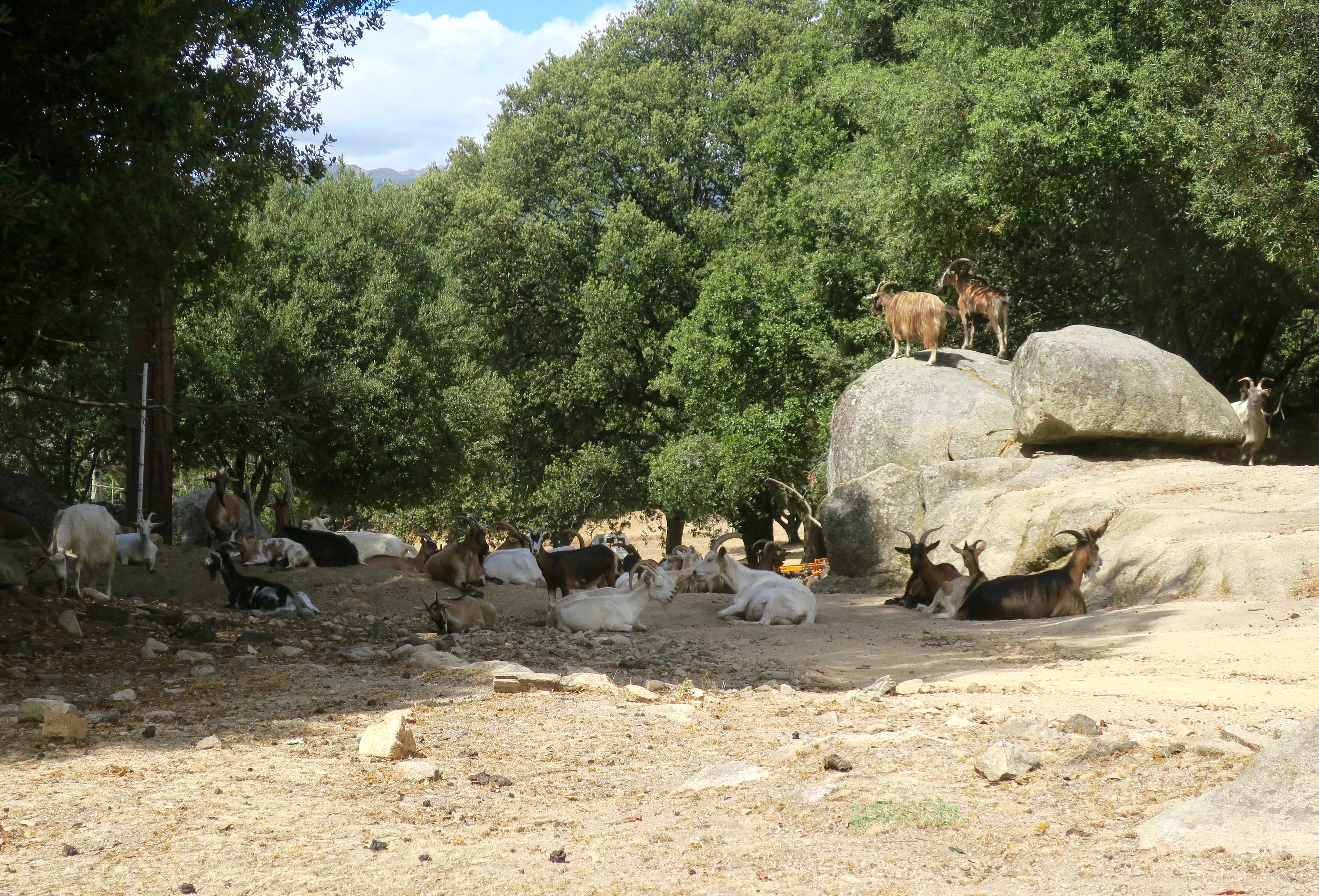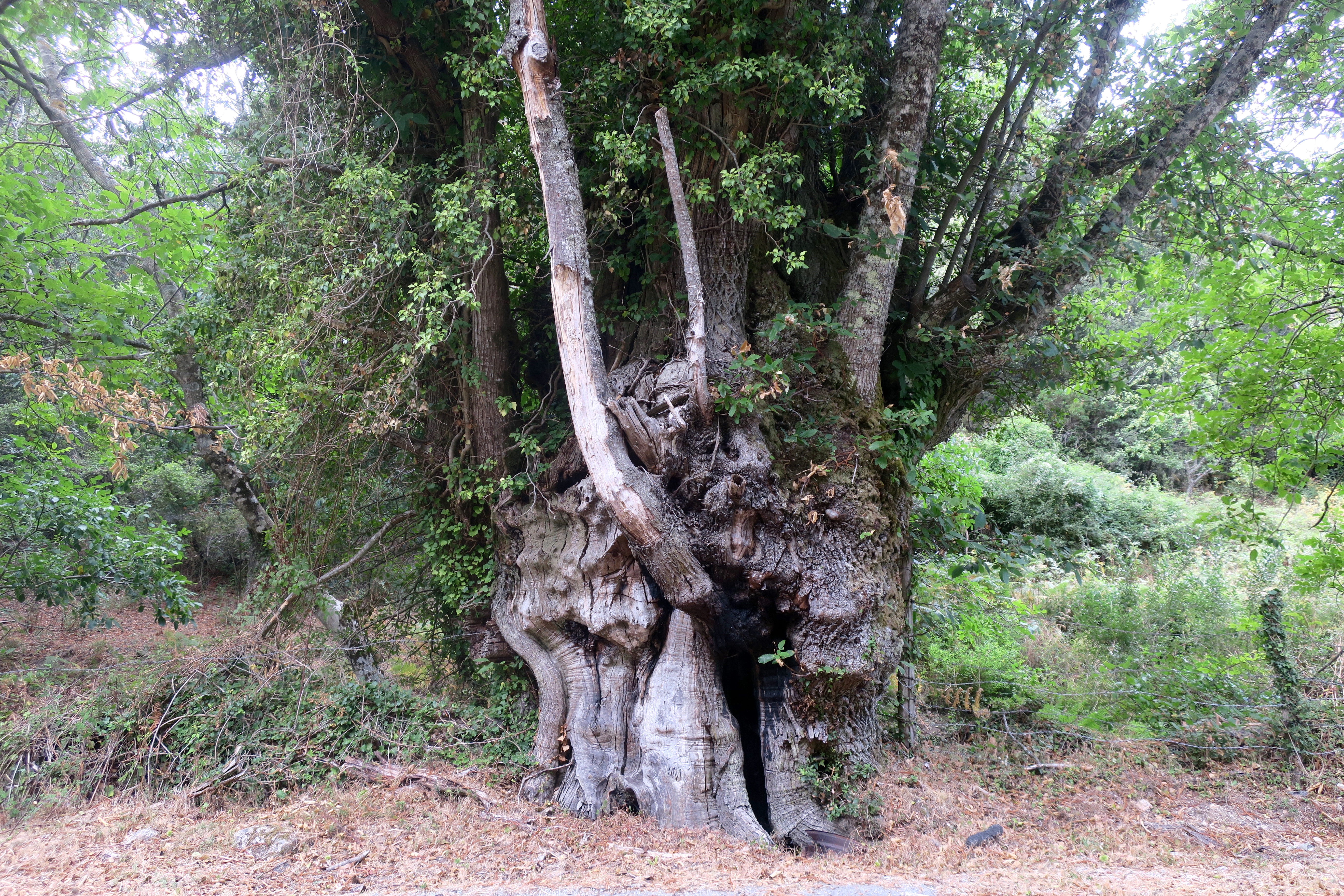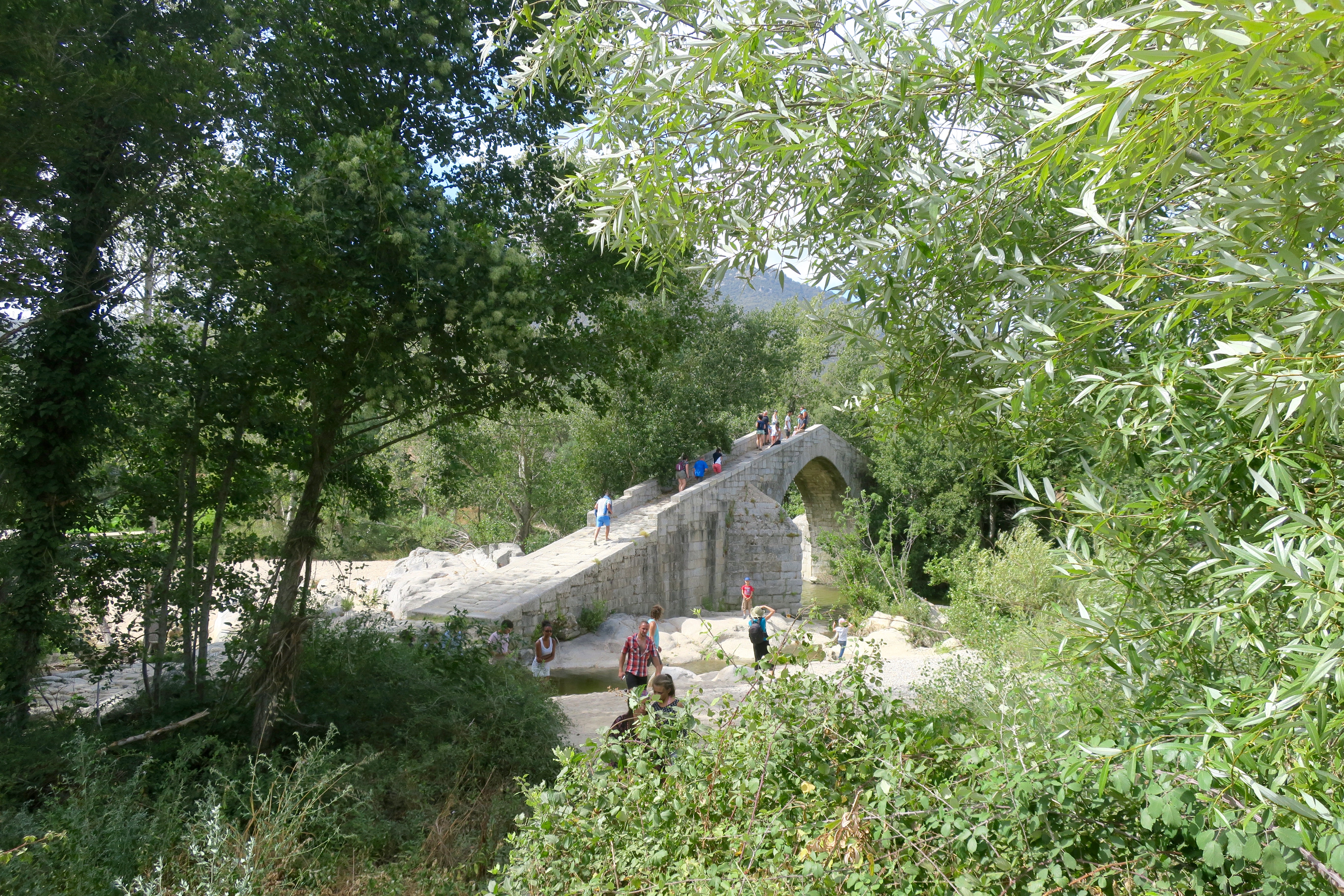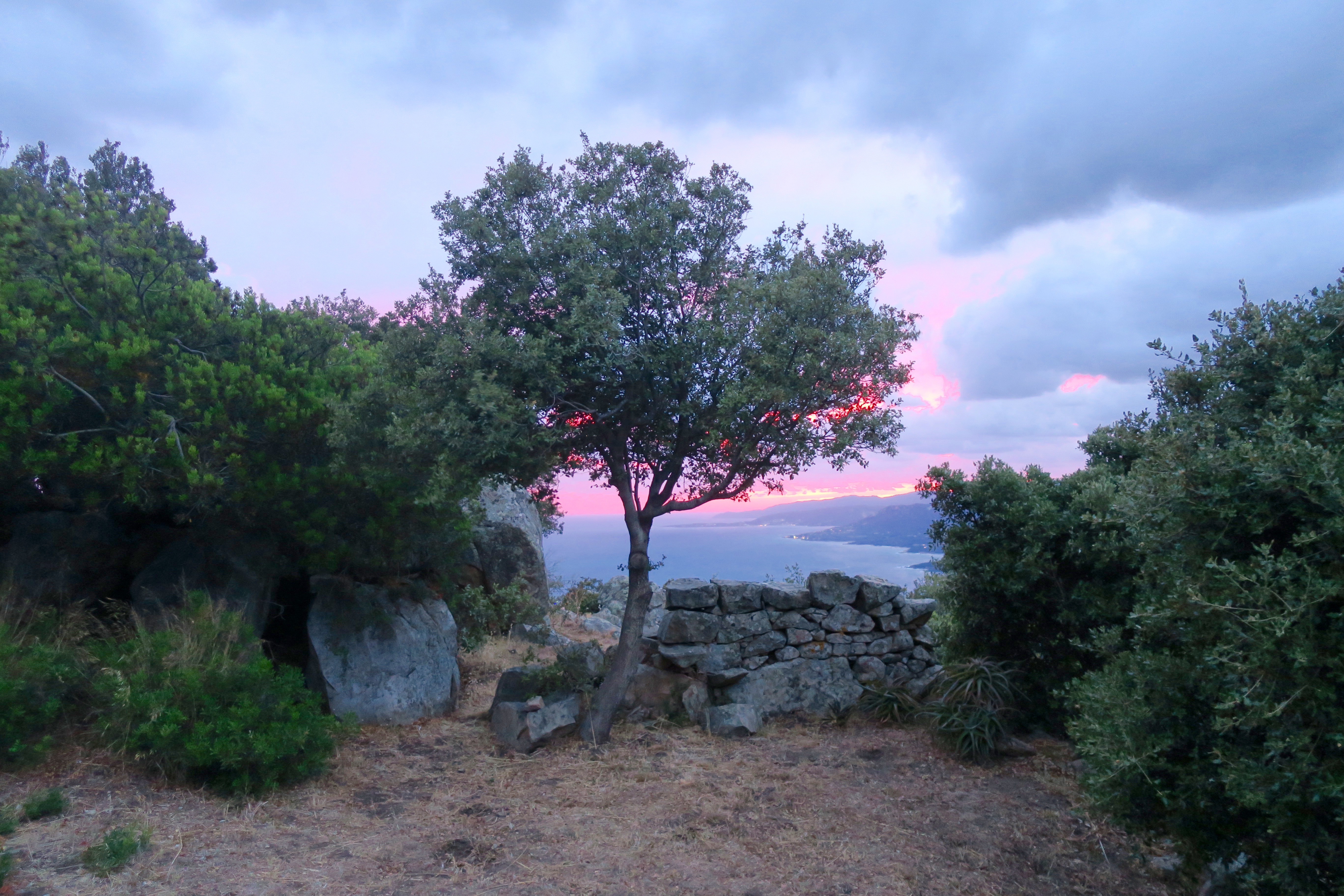A remembrance of last summer, a walk in the shade of olive trees and holm oaks, a green daze for these grey days, a sequence of photos one after another, mementoes of footsteps along a wooded path, winding down into the valley, submerged in the dappled light, a brief antidote until our sun returns.
I’d seen a dotted green line on the map about 18 kilometres north-east of Propriano where we were staying in Corsica. It led from the tiny village of Poggio-di-Tallano to the isolated chapel of Saint-Jean-Baptiste, and the promise of a cool, immersive sinking-down into the undergrowth of the island.
To be swallowed-up into the countryside is always a good thing. Straight away we recognised the olive nets and realised our earlier assumption of cheesecloth pumpkins had been a little bit of a wild guess.
Looking back across the valley towards Olmiccia.
And then on down, one photo-footstep at a time…
absorbing all the summer light…
and storing it up for the winter dark.
The isolated chapel suddenly appeared through the olive trees, but its door turned out to be locked. There was no way in, so it served as a pivot to swing our walk around, a short hesitation to take in its Romanesque antiquity and its more recent allocation as a cowshed, before heading back up to Poggio.
A reminder of Graham Sutherland.
Our winding path eventually arrived back where we started from.
We returned to our car and drove up the Rizzanèse valley to the village of Sainte-Lucie-de-Tallano.
Ste-Lucie is famous for an extremely rare grey stone called ‘diorite orbiculaire’, or corsite, or briefly ‘Napoleonite’, the only rock in France once protected by the military, when in 1809 General Morand sent in troops to protect the quarry. Now exhausted – much of what Napoleon failed to extract was removed by German contractors a few years back – Corsica’s diorite is especially prized for its crystallizations in concentric orbs that resemble leopardskin. It features in the Medici chapel in Florence, on Napoleon’s tomb in Les Invalides in Paris, and in the base of Ste-Lucie’s Monument aux Mort in Piazza di l’Ulmu (see photo above).
Corsica: Dana Facaros & Michael Pauls
A café proprietor, dozing in a broken wicker armchair, told me that the monastery was locked; in my search for the key I wandered about the silent streets and square vainly questioning drowsy old men until I came to fancy that the entire population had succumbed to a sleeping sickness wafted in from the maquis. Finally, providentially, I ran into a young man, home on holiday from the Continent and thoroughly awake, a descendant of the noble house of Rocca and himself an artist, who promptly produced the key from the parish church. There he showed me a marble bas-relief commissioned – according to an inscription – in 1498, by his ancestor, Rinuccio della Rocca, in Florence, to judge by its style…
The monastery Rinuccio donated to the Franciscans stands on a grassy platform above the village. The church is still intact; but the monastic buildings are sadly dilapidated and deformed, their high-arched cloisters blocked with crude masonry and rough patched farmyard doors.
‘One feels so despairing!’ my companion, Rinuccio’s descendant, exclaimed. ‘Everything in Corsica goes to ruin and no one cares.’ We had paused under the elm tree in front of the church door. Seen from above Sainte-Lucie looked like a densely inhabited island, the surrounding maquis a dark rough sea. Other, smaller villages appeared on distant mountainsides, like rocks where sea birds rest or ships labouring through the waves.
Granite Island, A Portrait of Corsica: Dorothy Carrington
From Sainte-Lucie-de-Tallano we followed the road for Levie, but turned off when we saw the sign for Sites Archéologique de Cucuruzzu et Capula. Unfortunately the sites were closed because of the high risk of wildfires and we were advised to try again in a few days time. Nearby a flock of goats posed for a group portrait and then further down the lane an ancient sweet chestnut was waiting to greet us.
On the way back to Propriano we stopped at Pont Spin’a Cavallu, a 13th century bridge over the Rizzanèse river, its single arch giving it the name ‘horse’s back’. It’s a popular bathing spot and the bridge’s distinctive shape is a striking landmark and a useful logo for the excellent local rosé.
Perfect to watch the sun go down.


